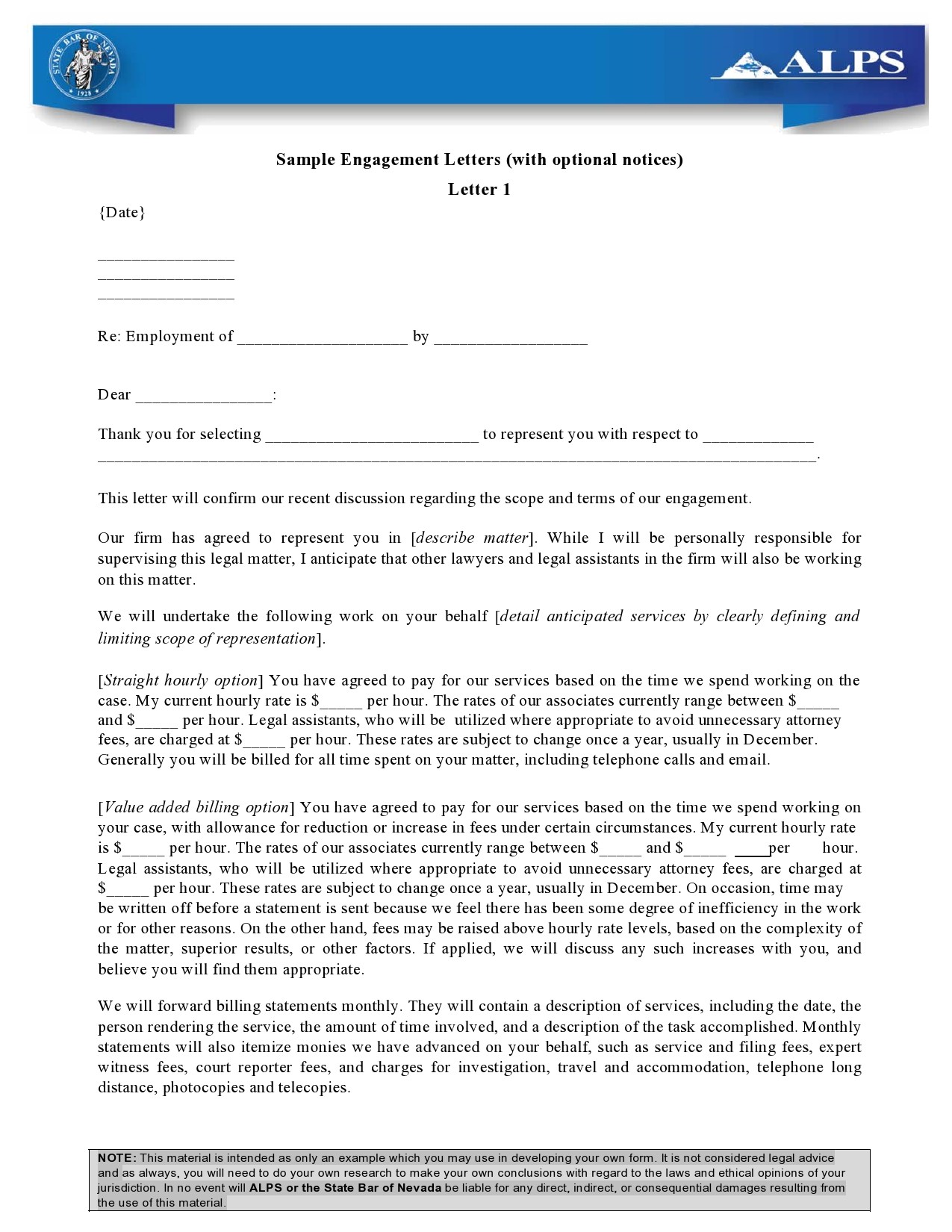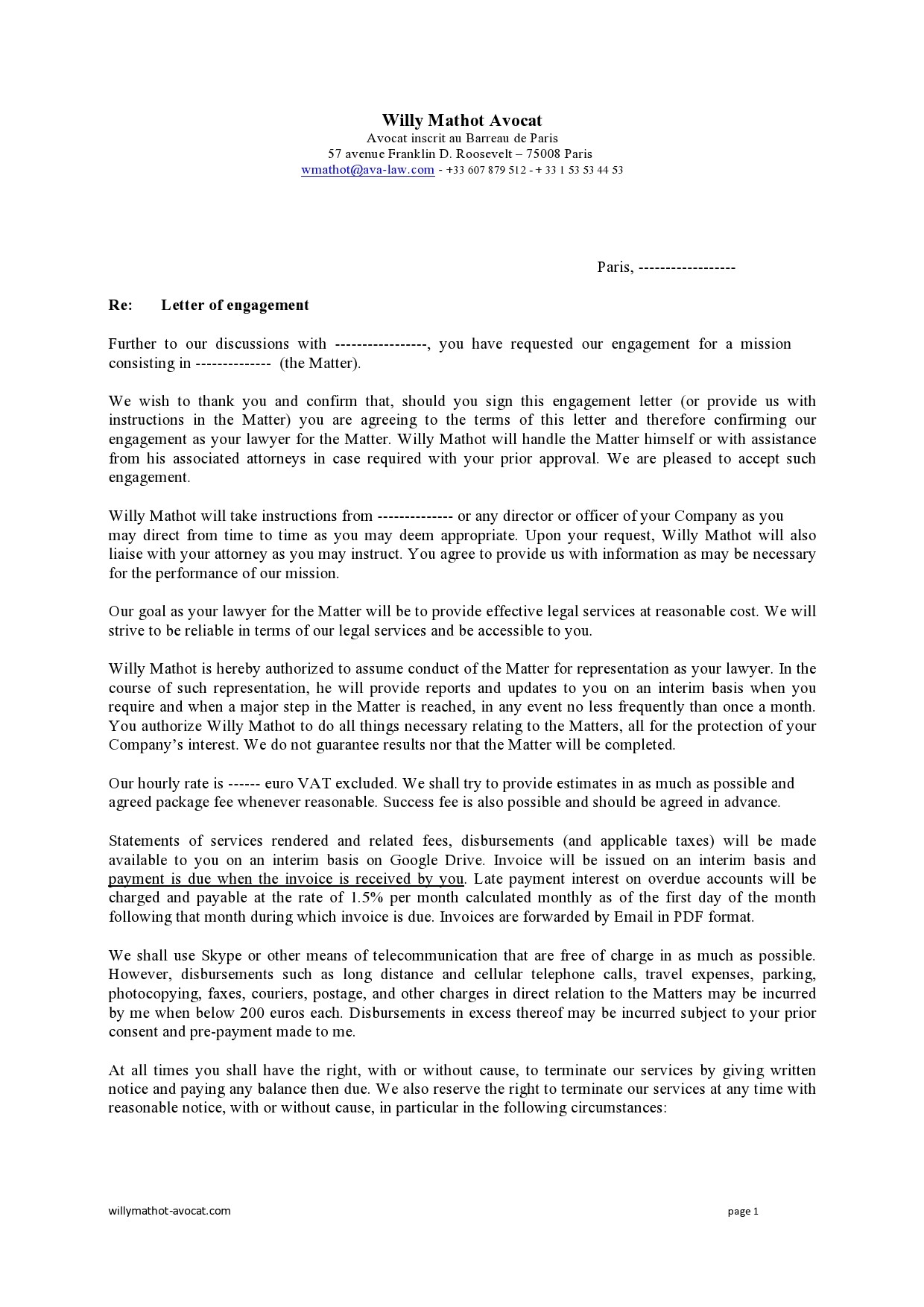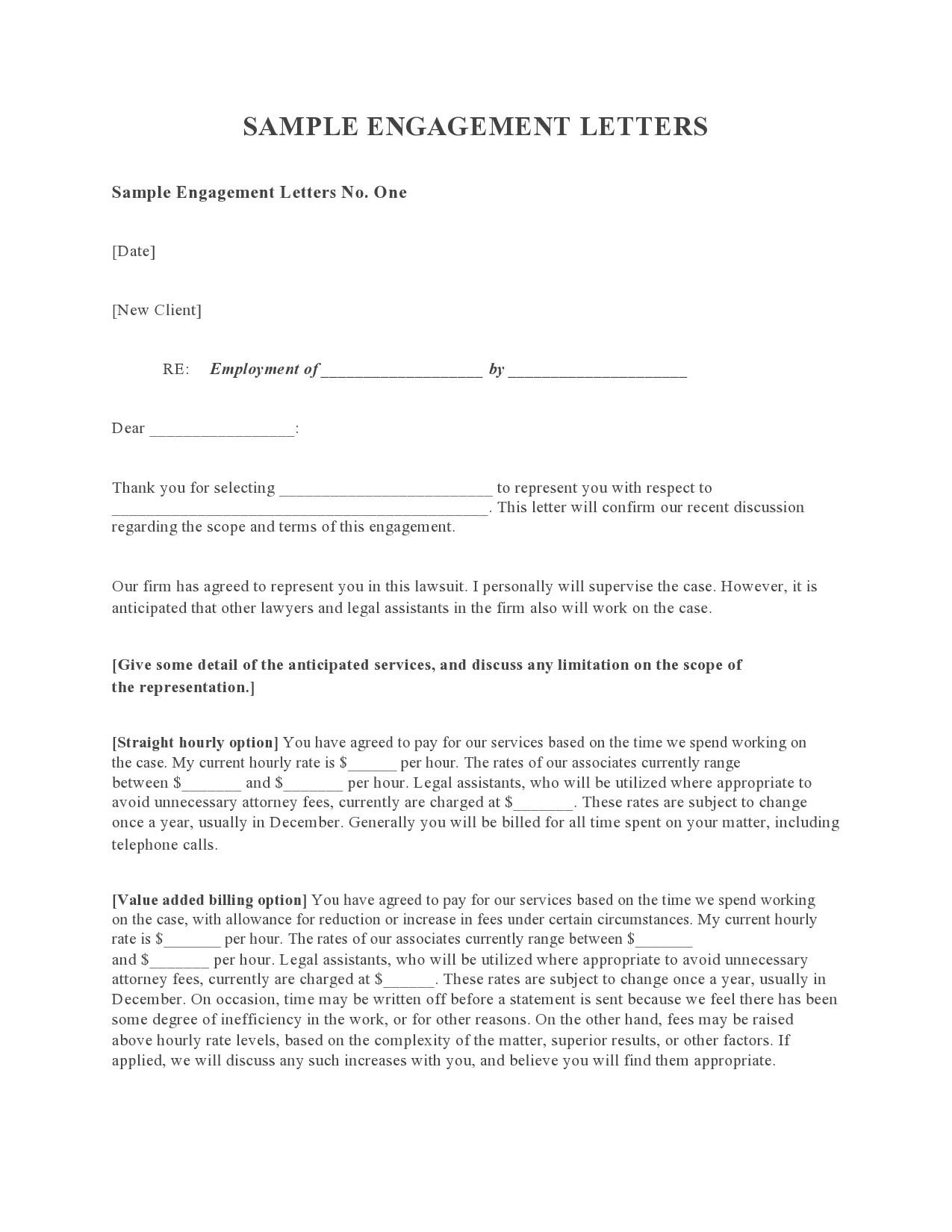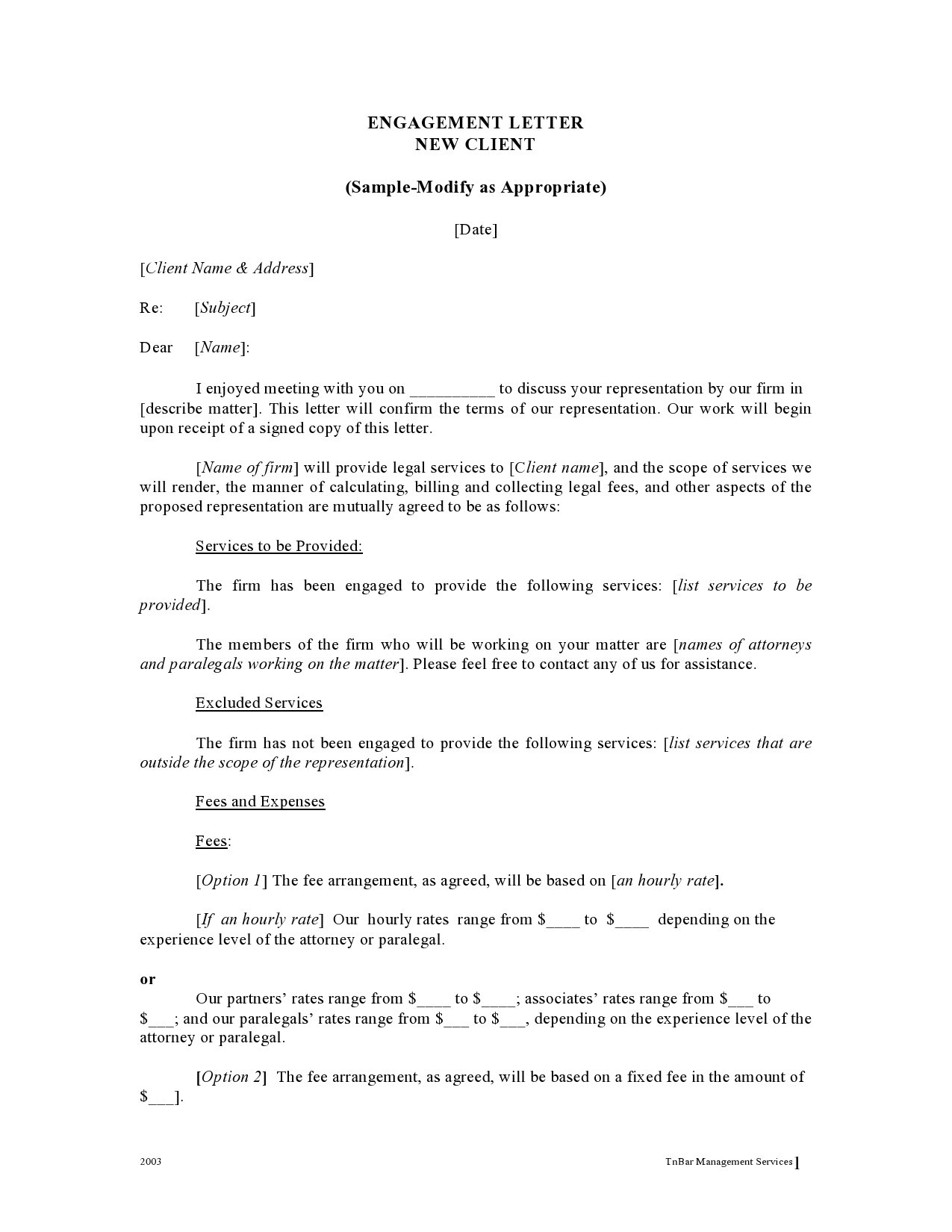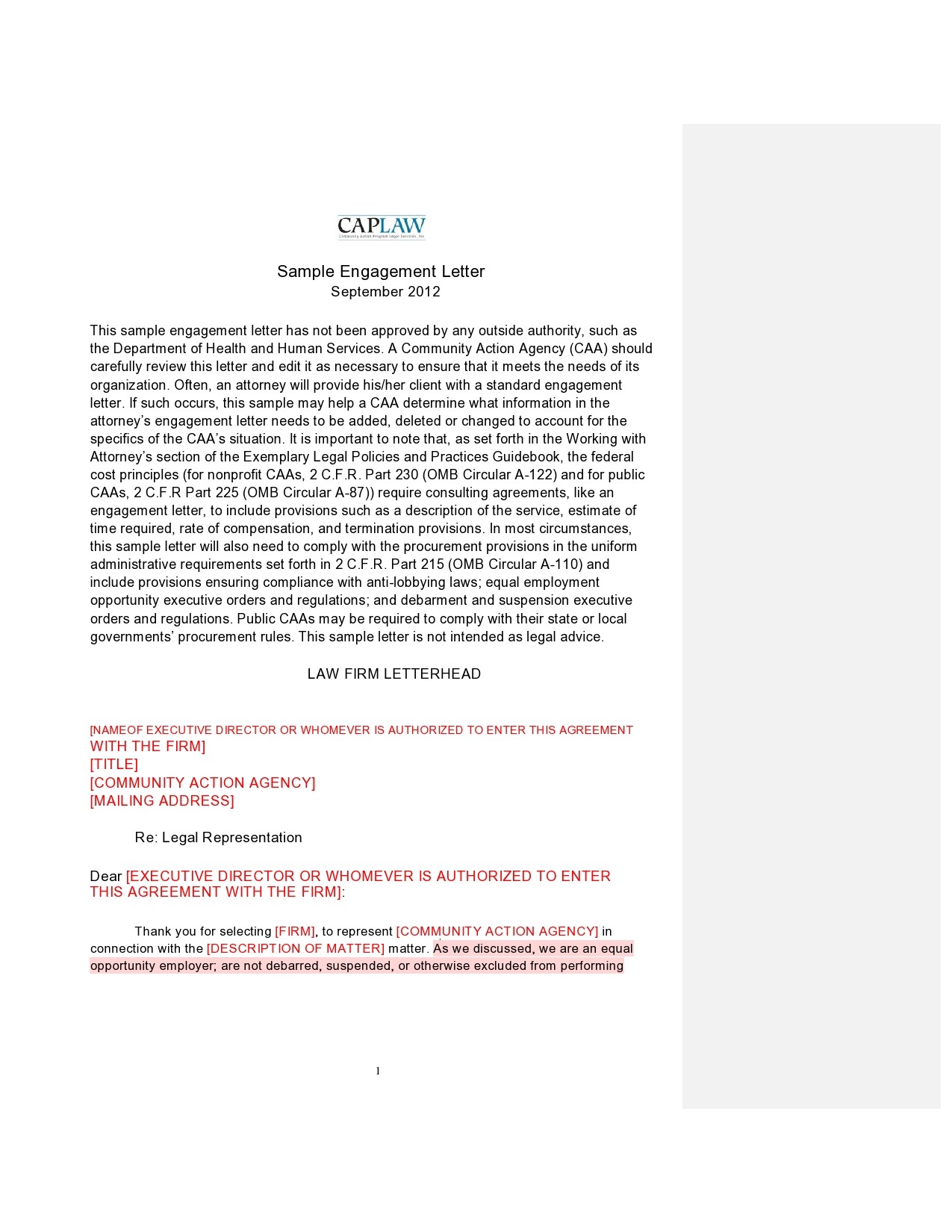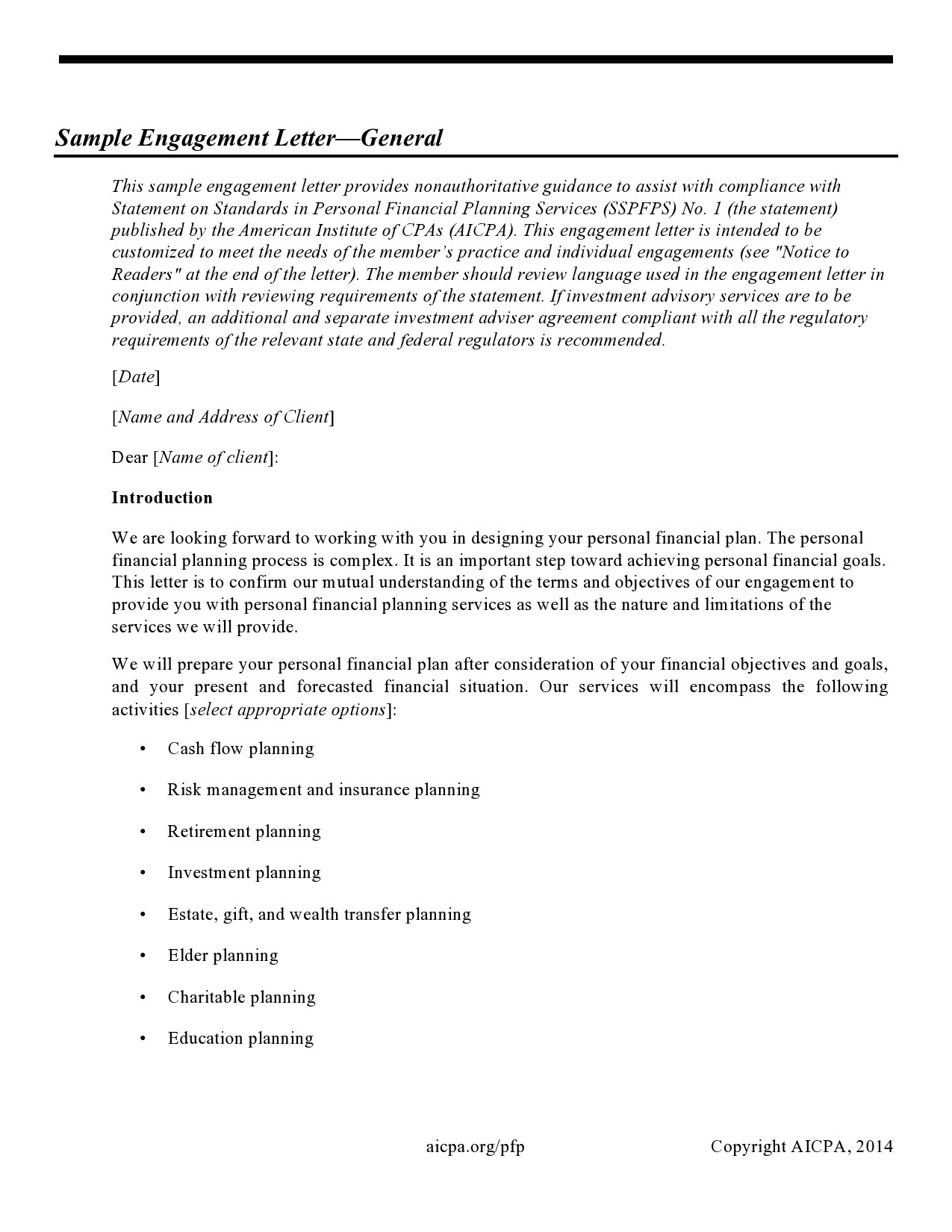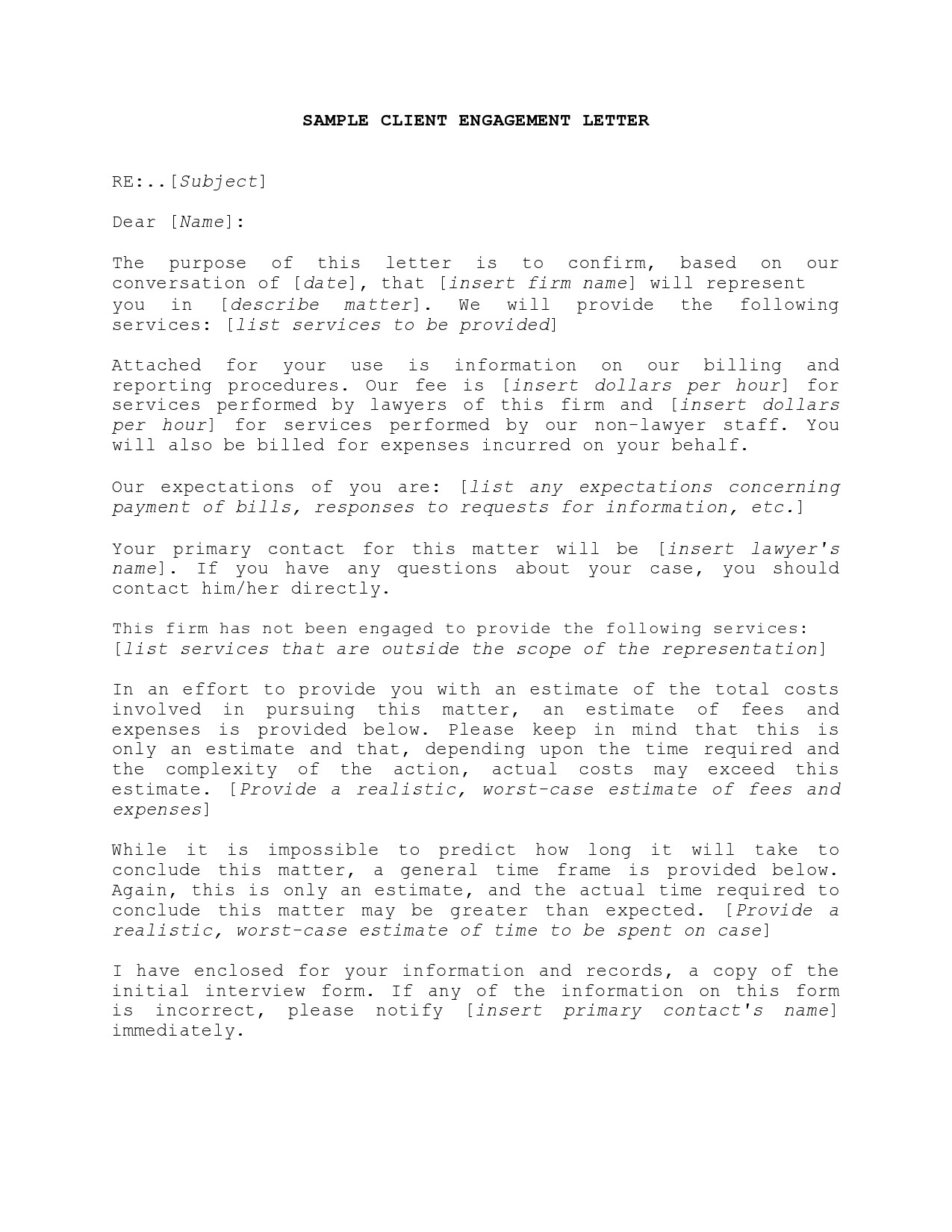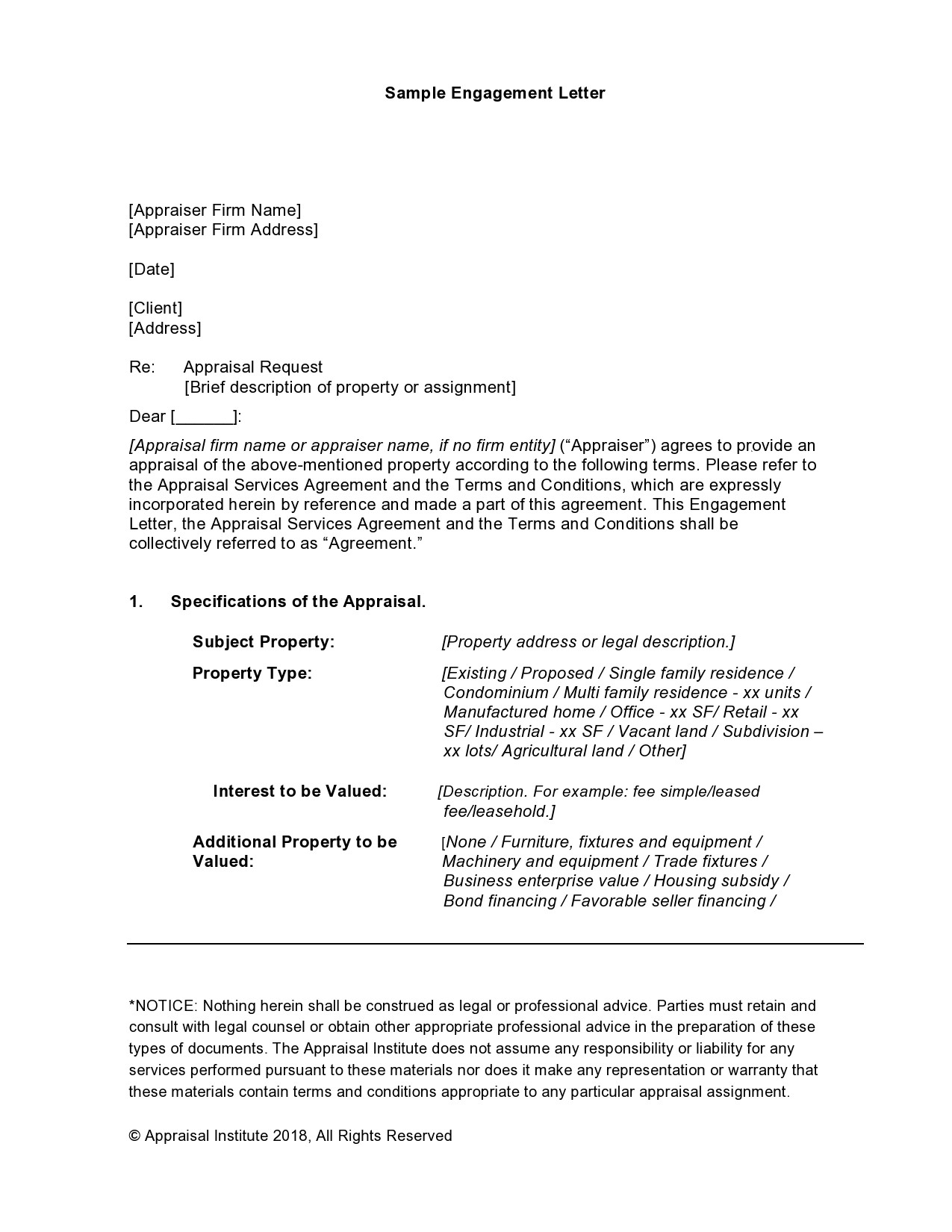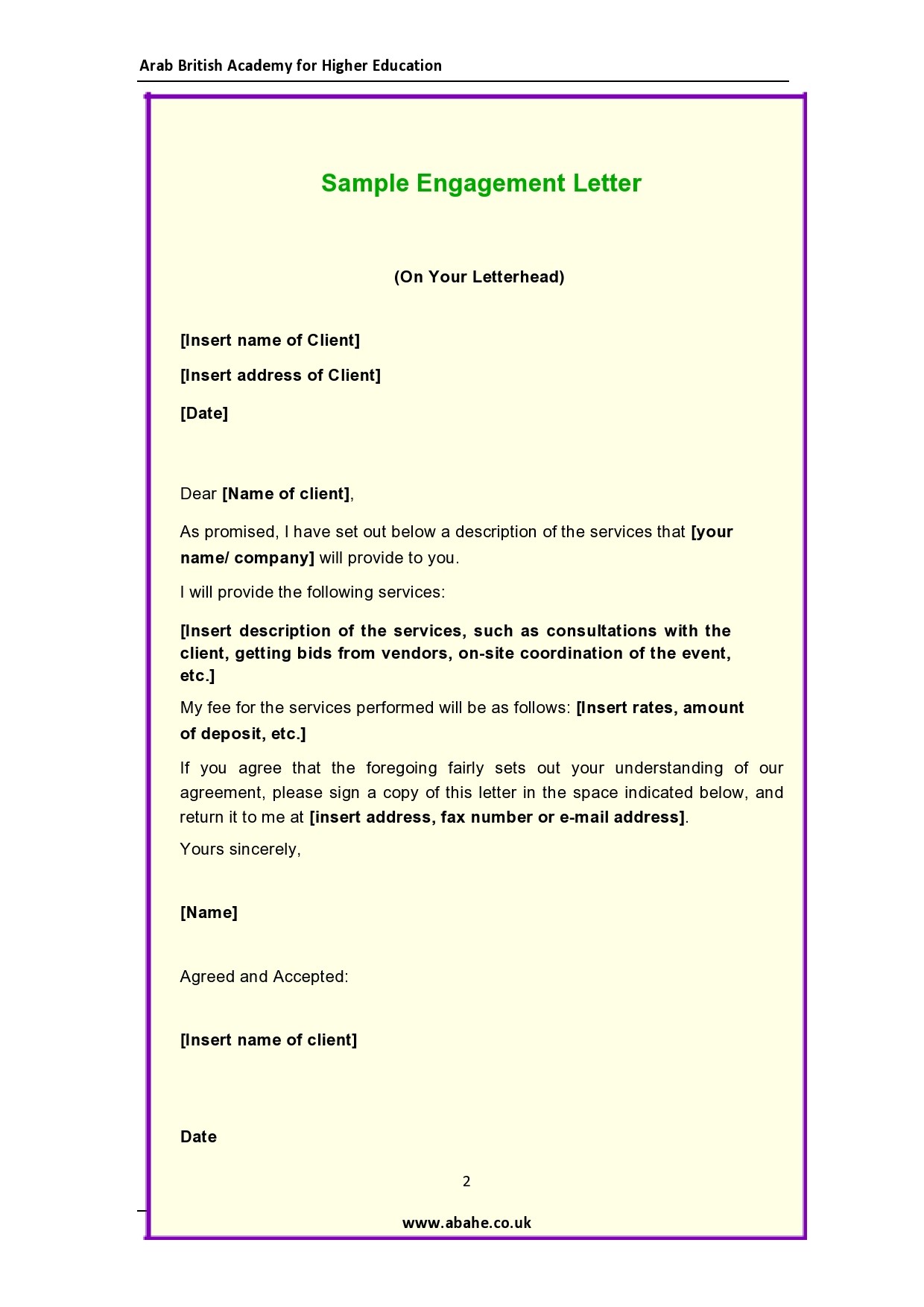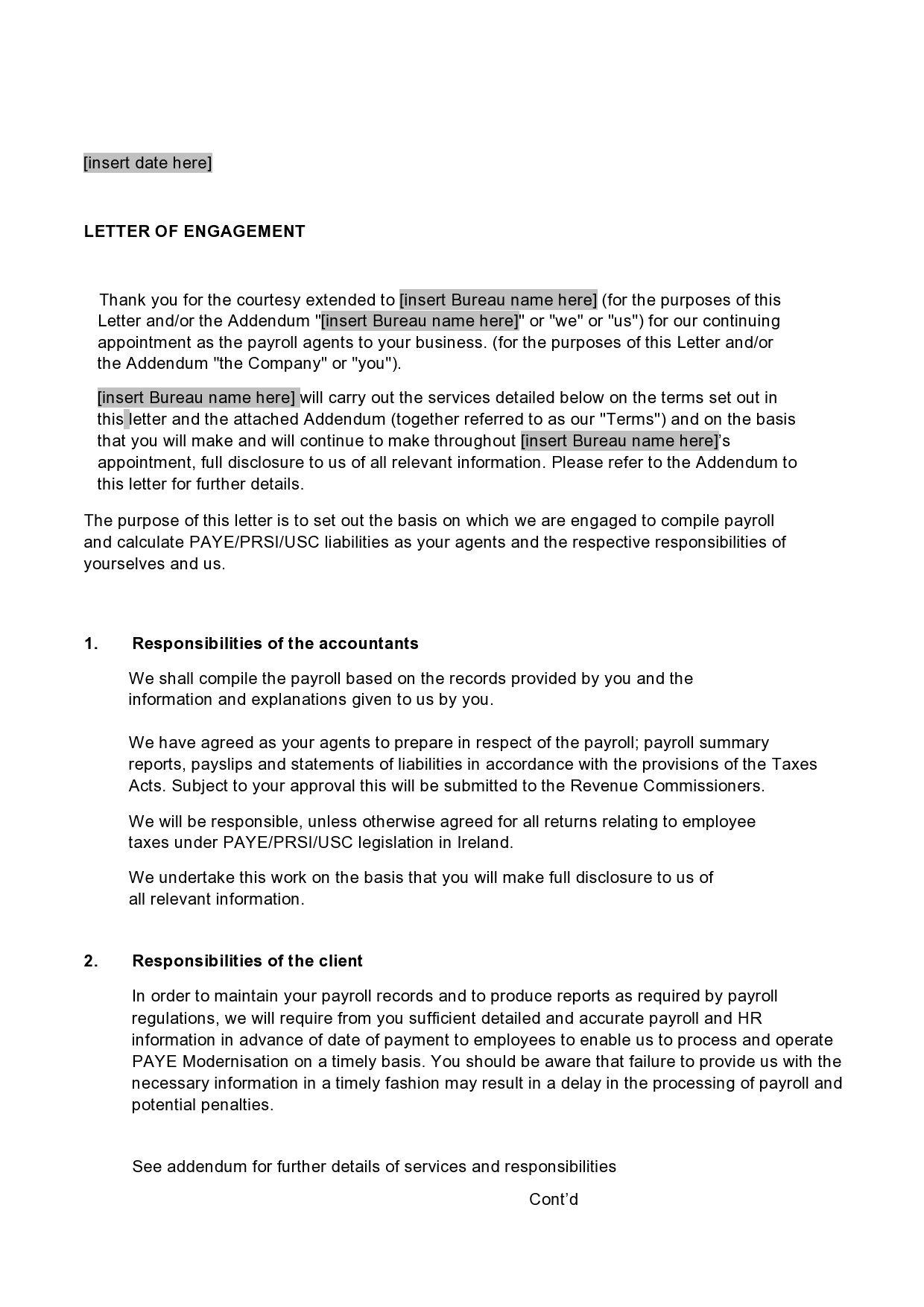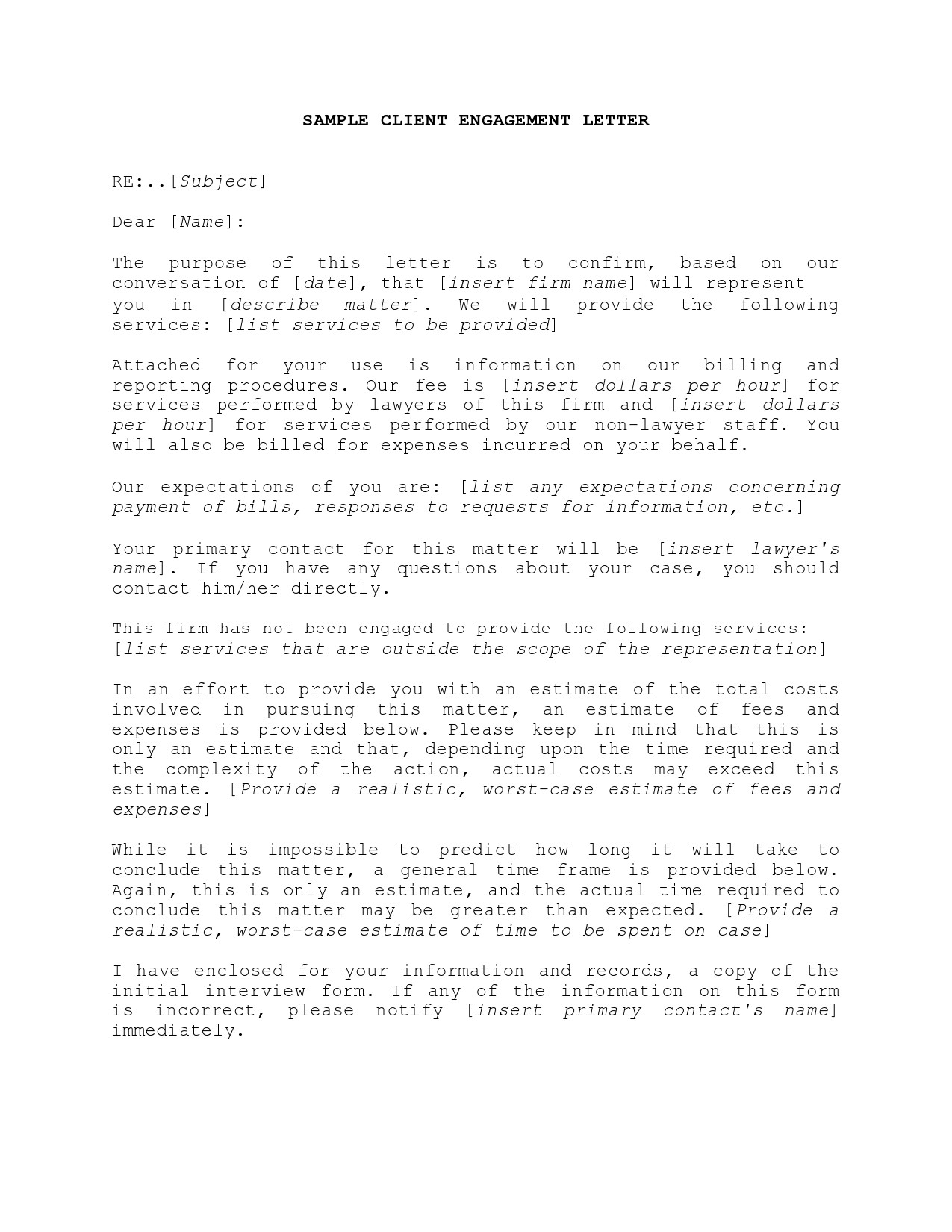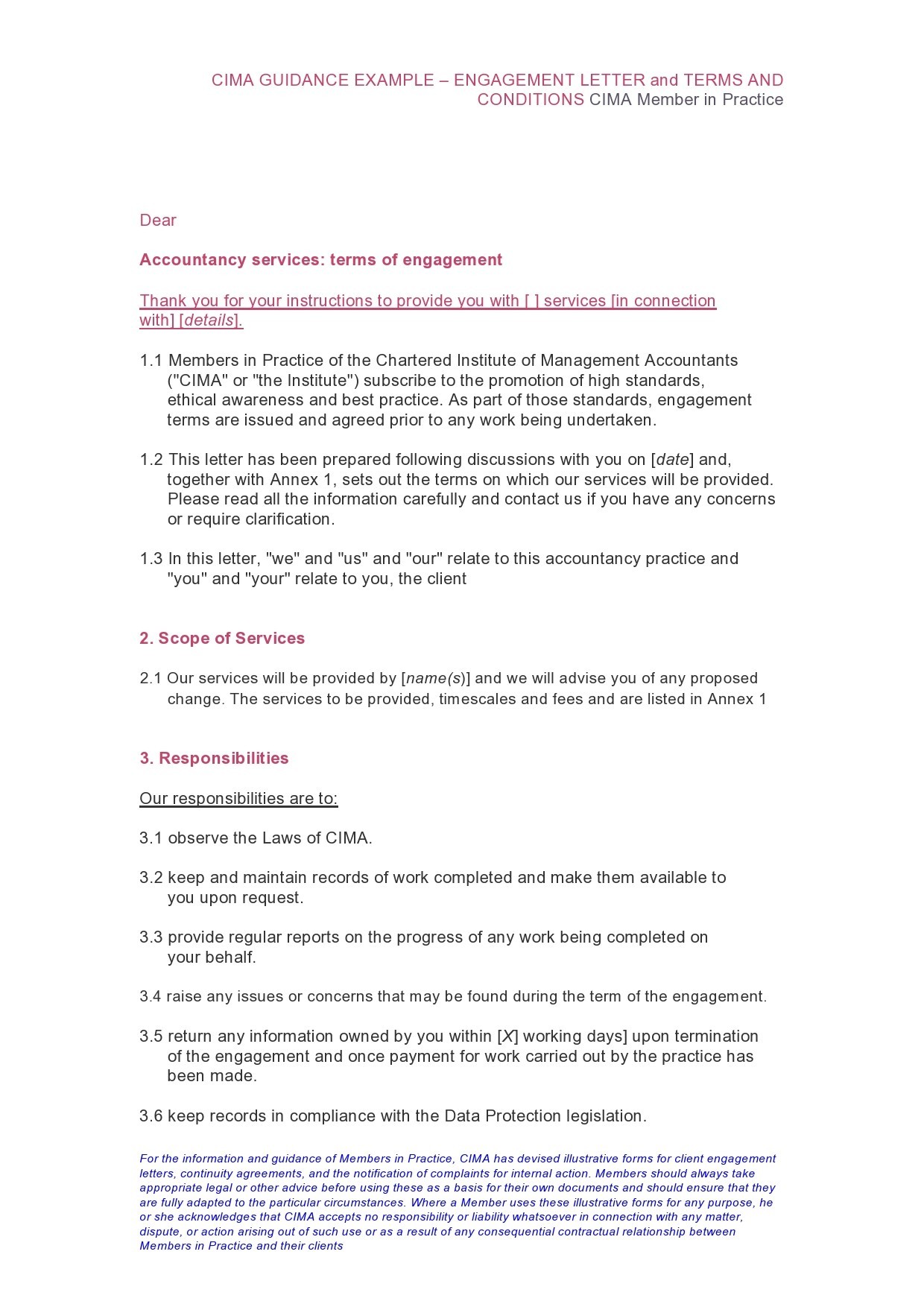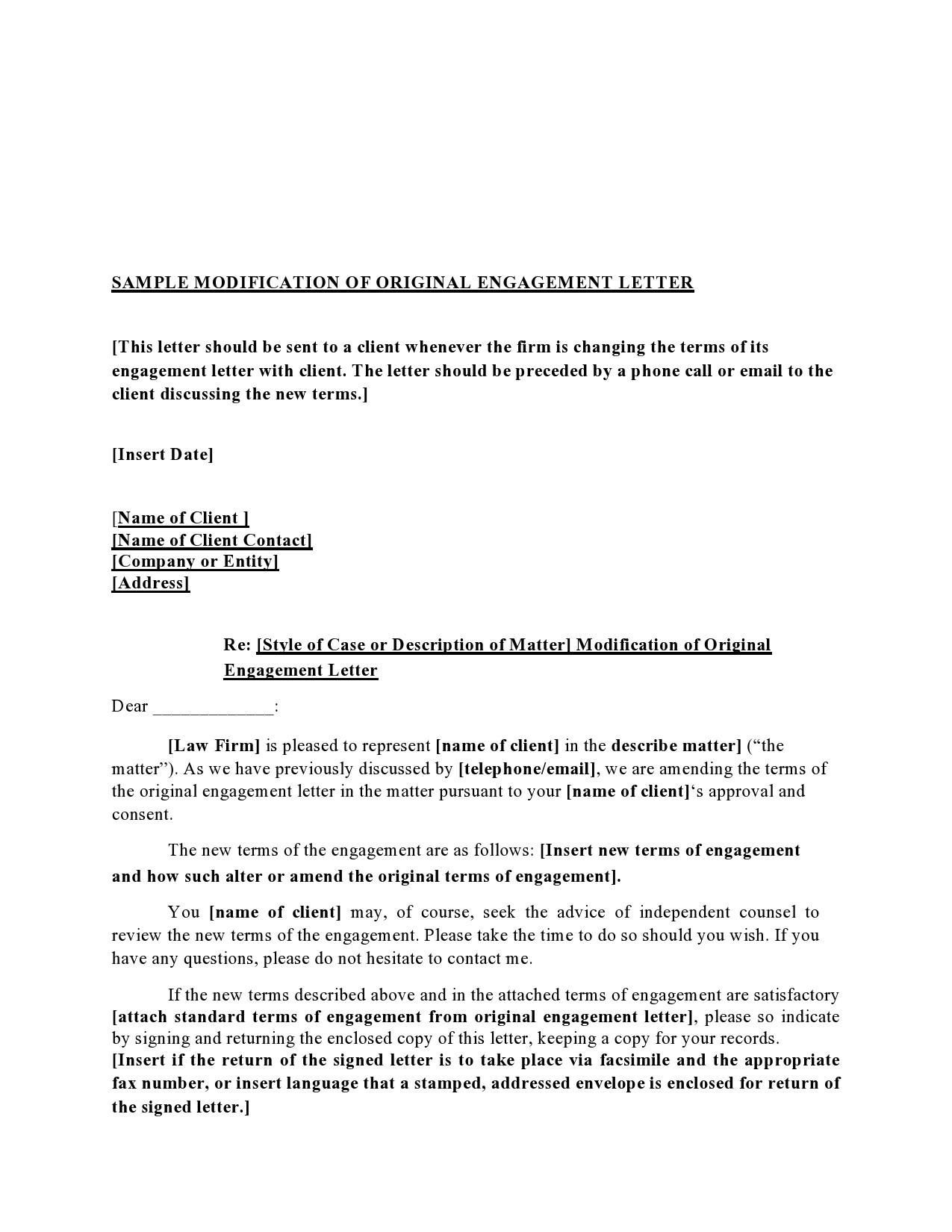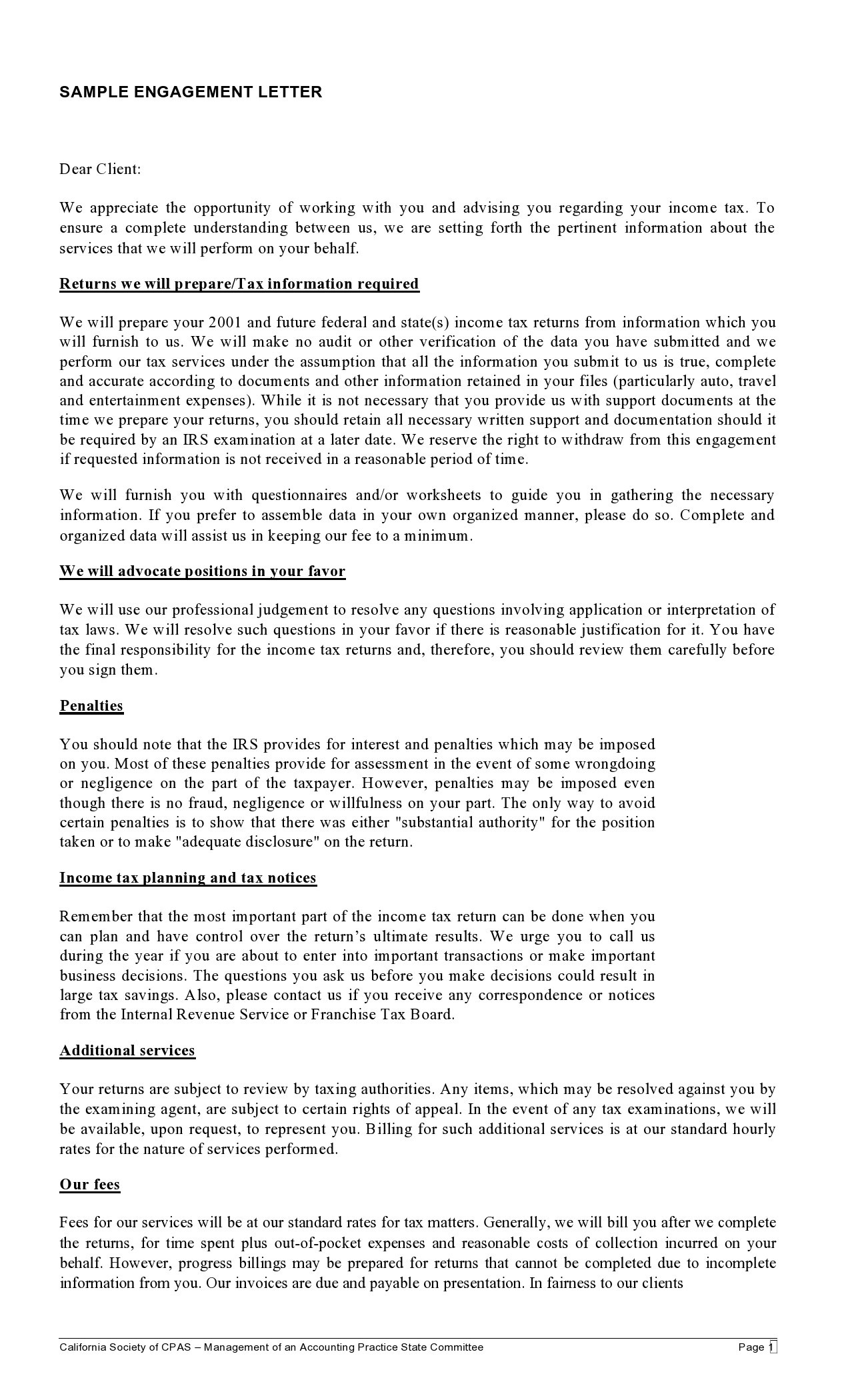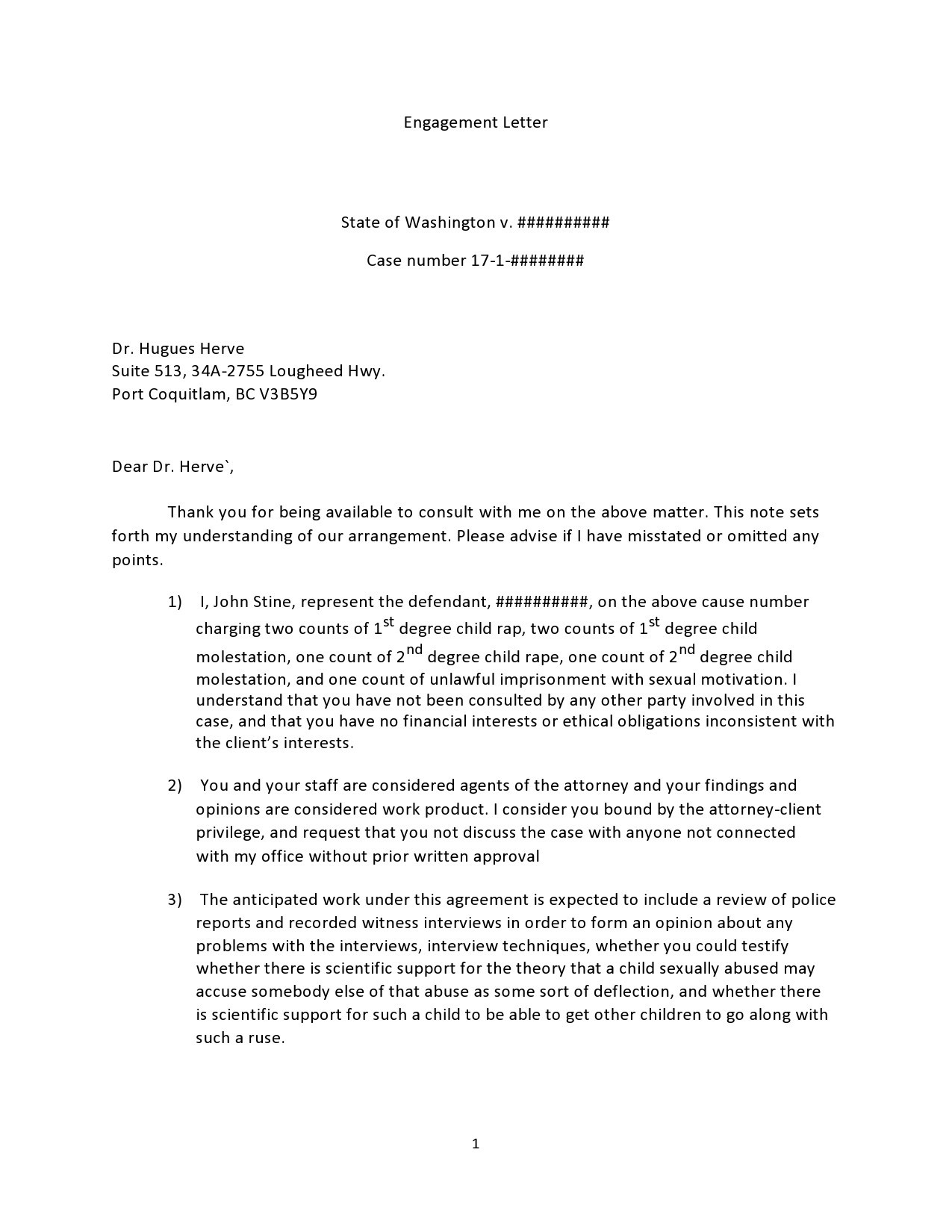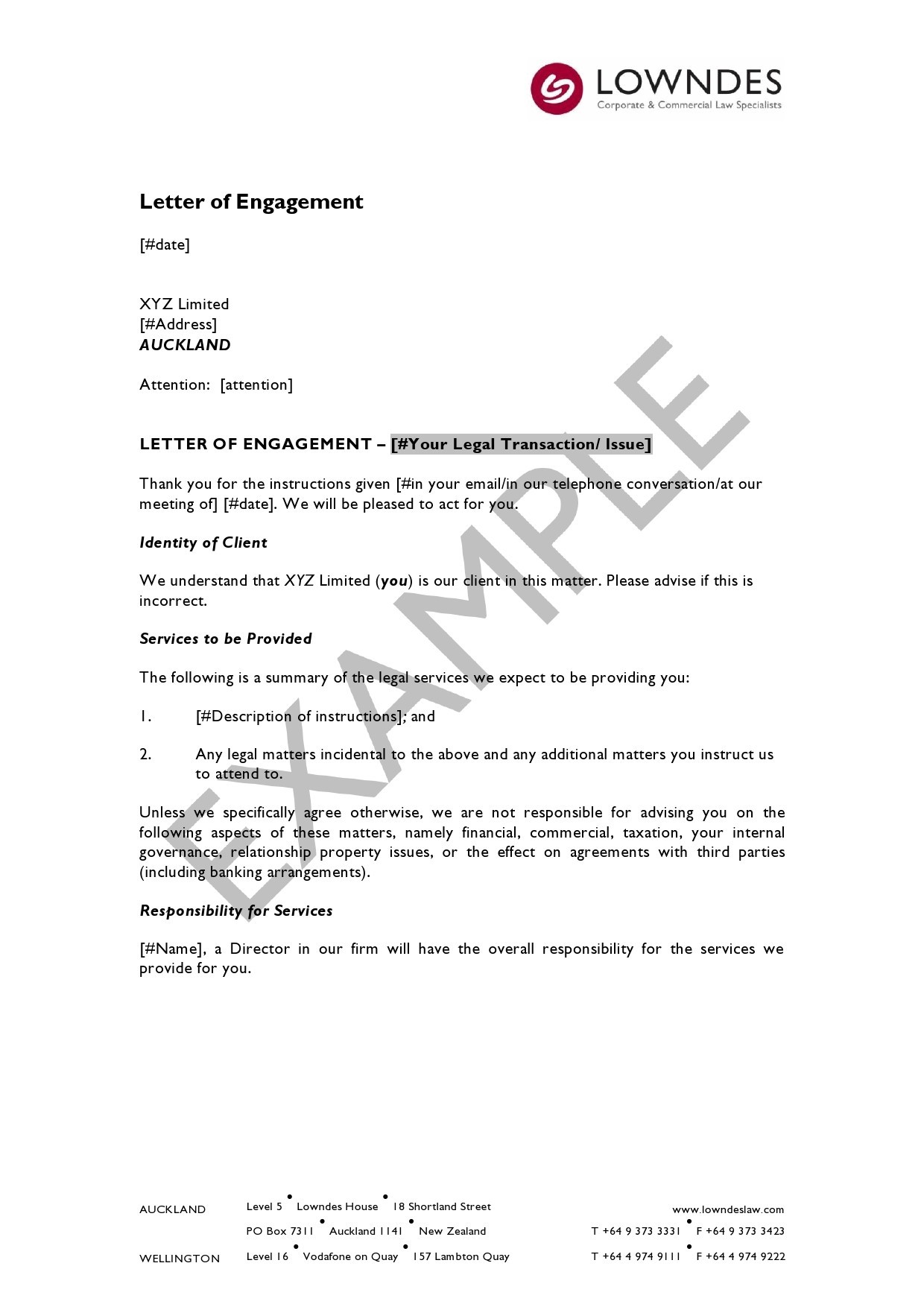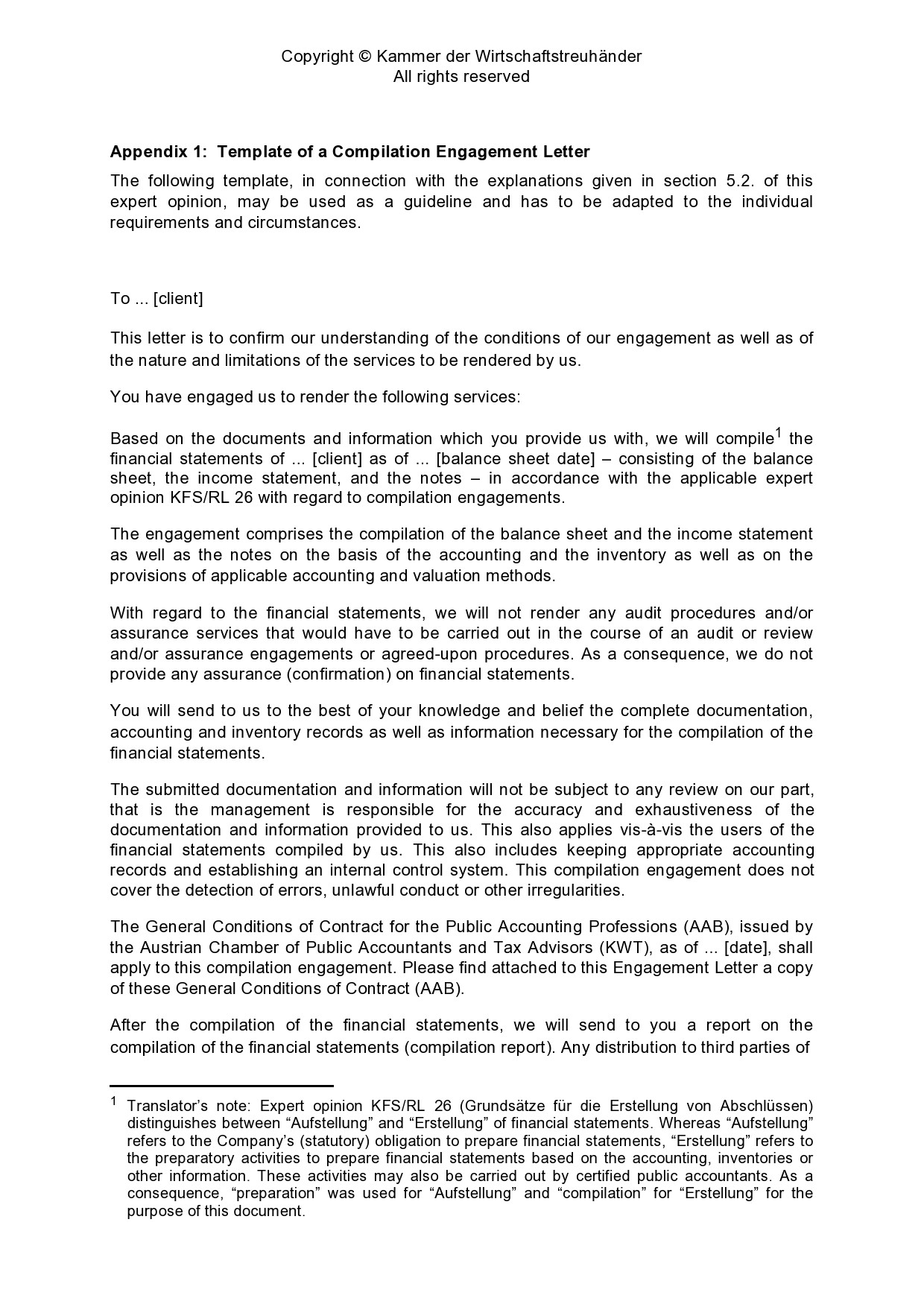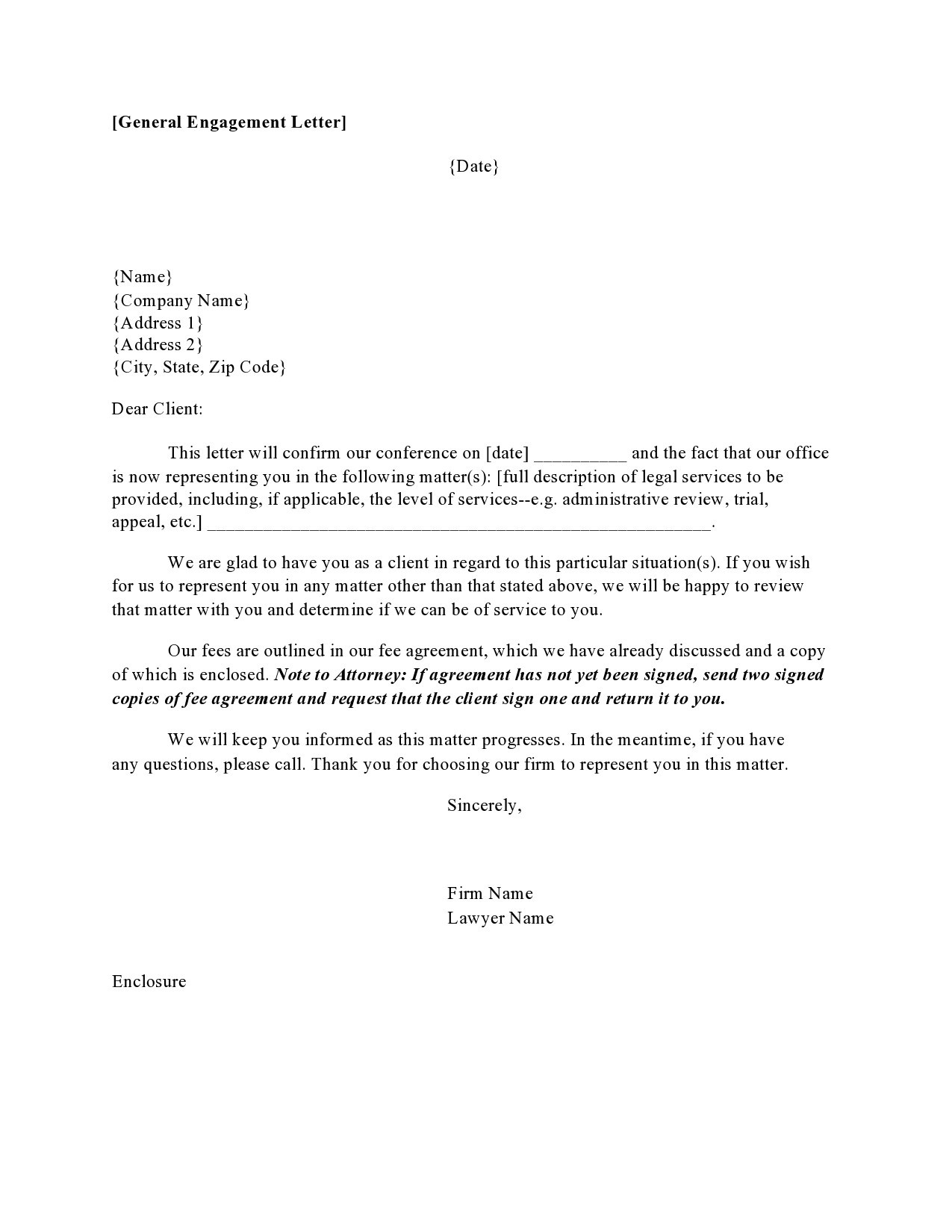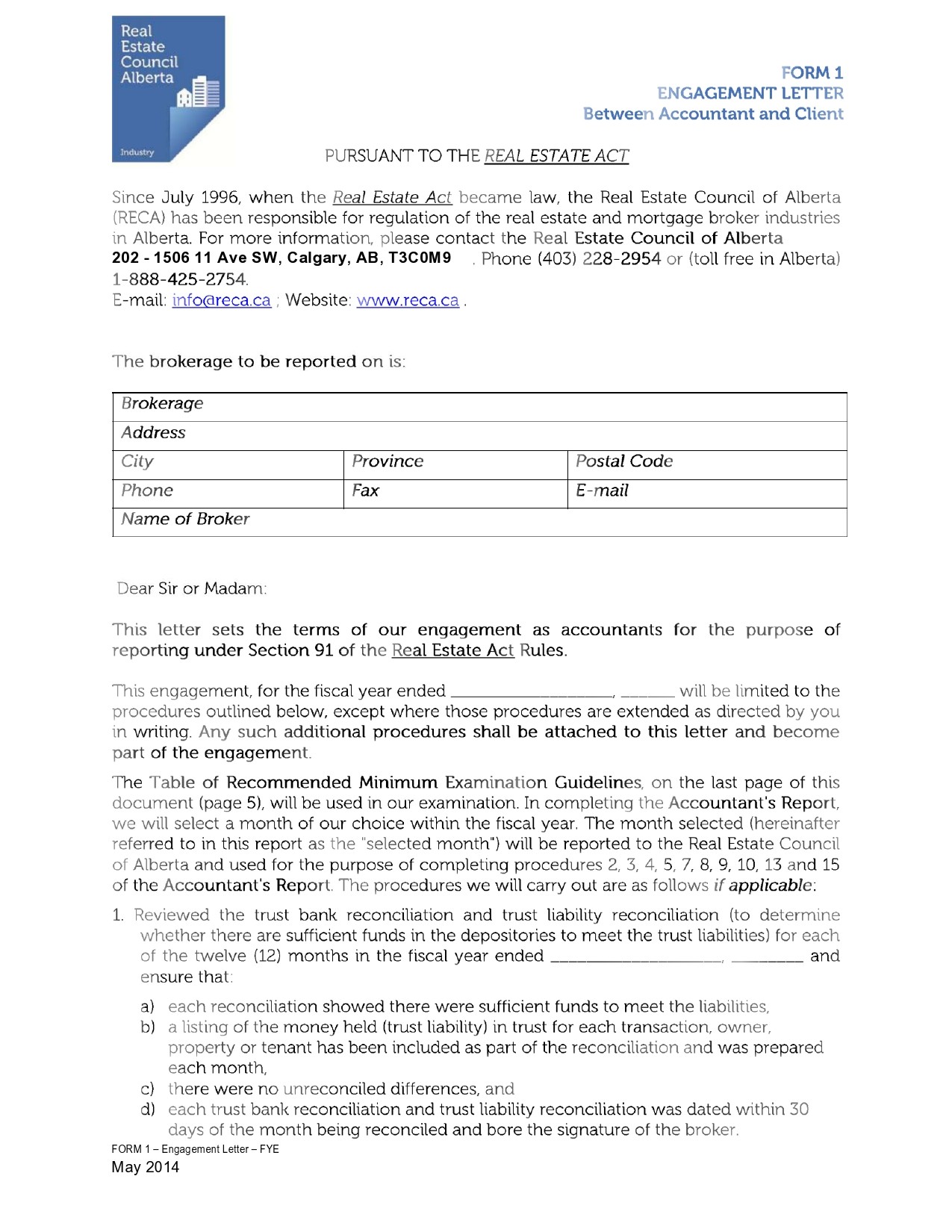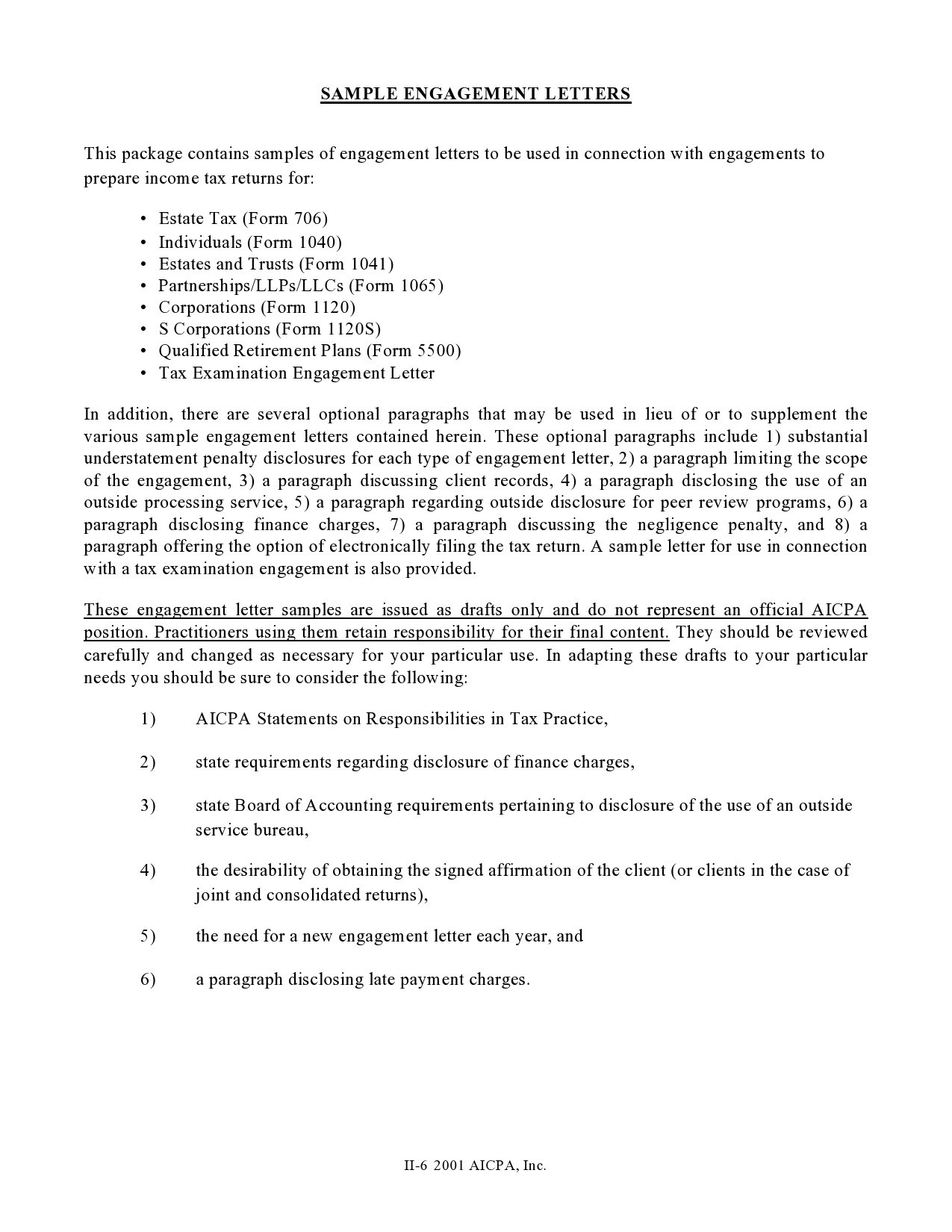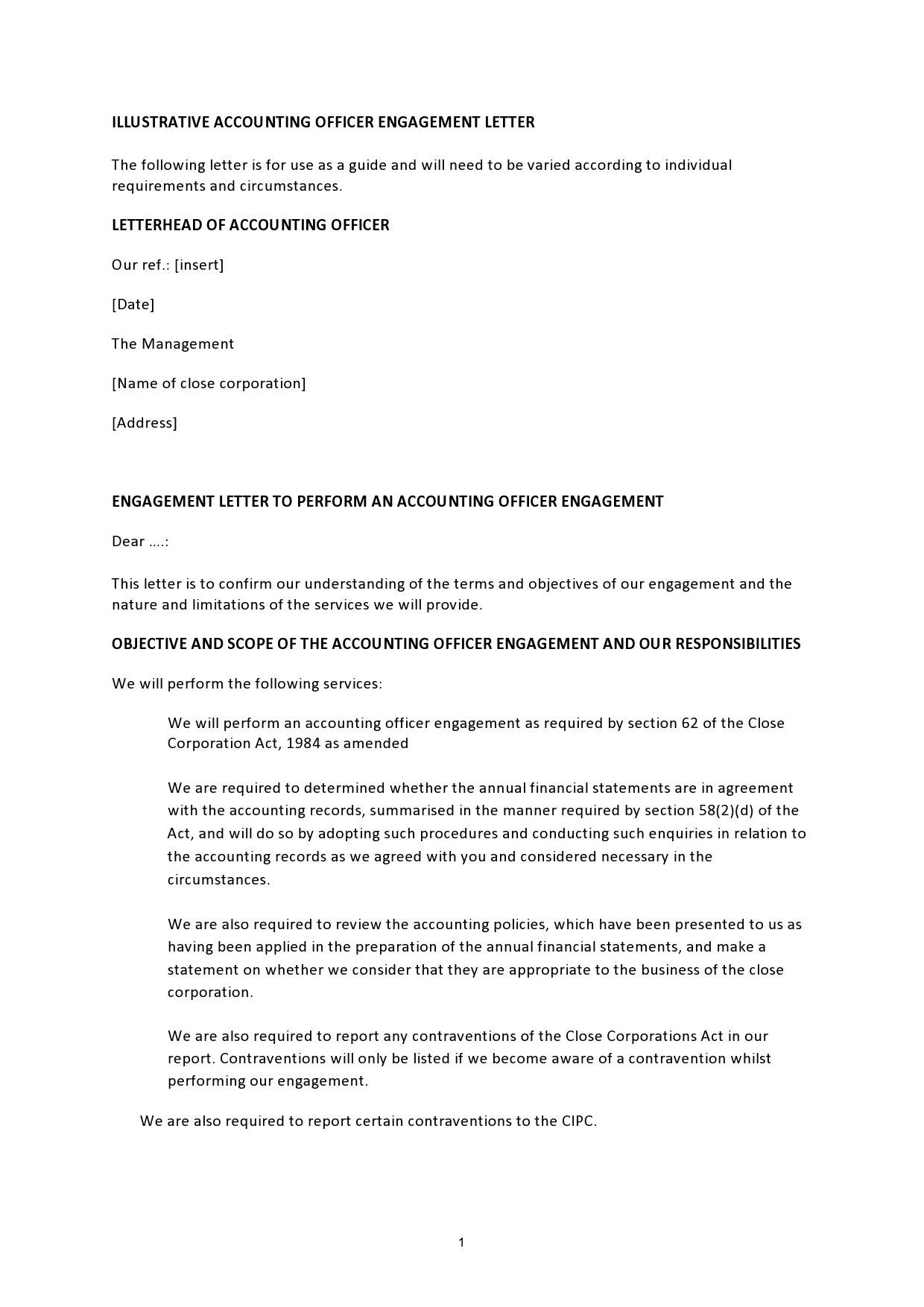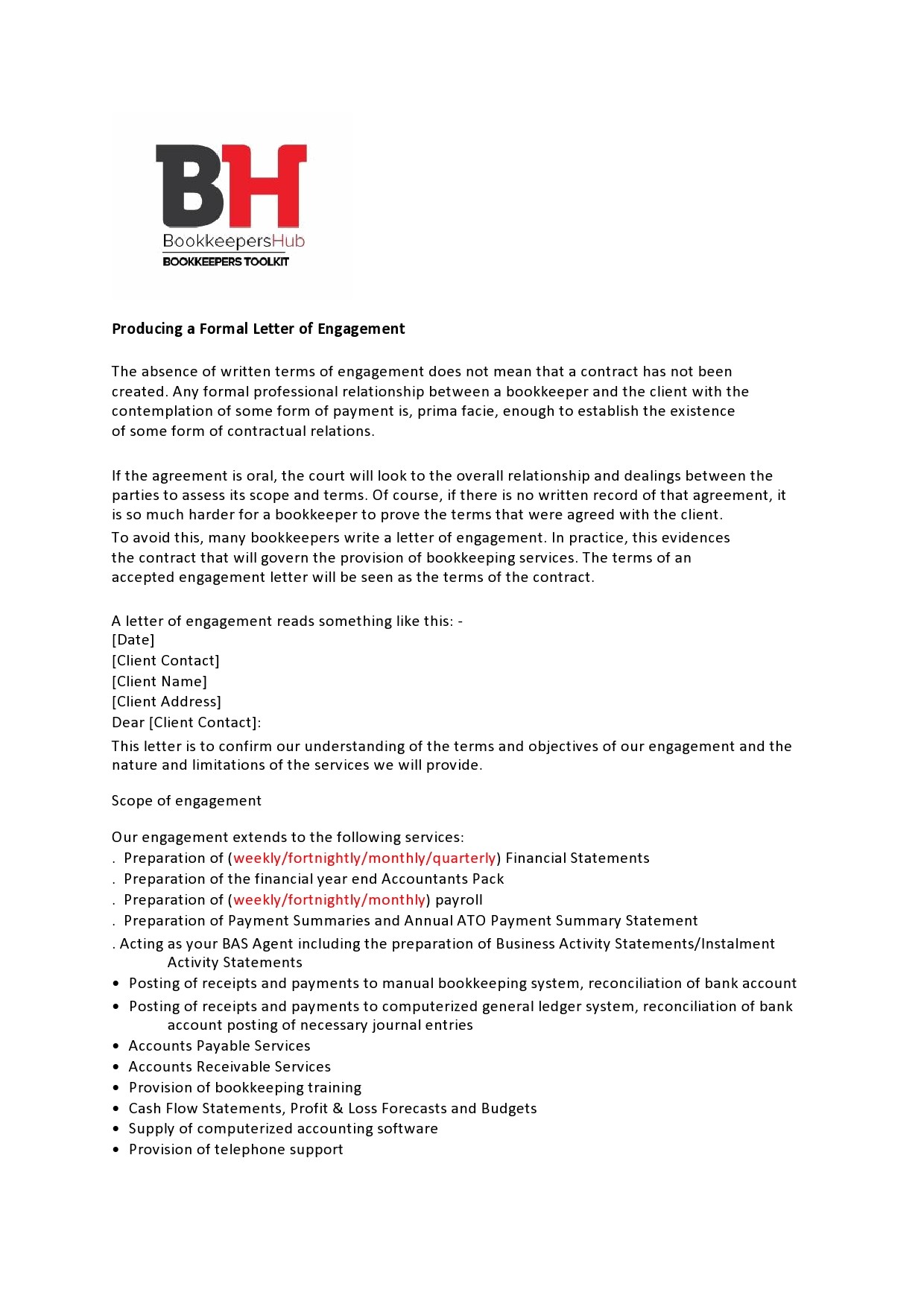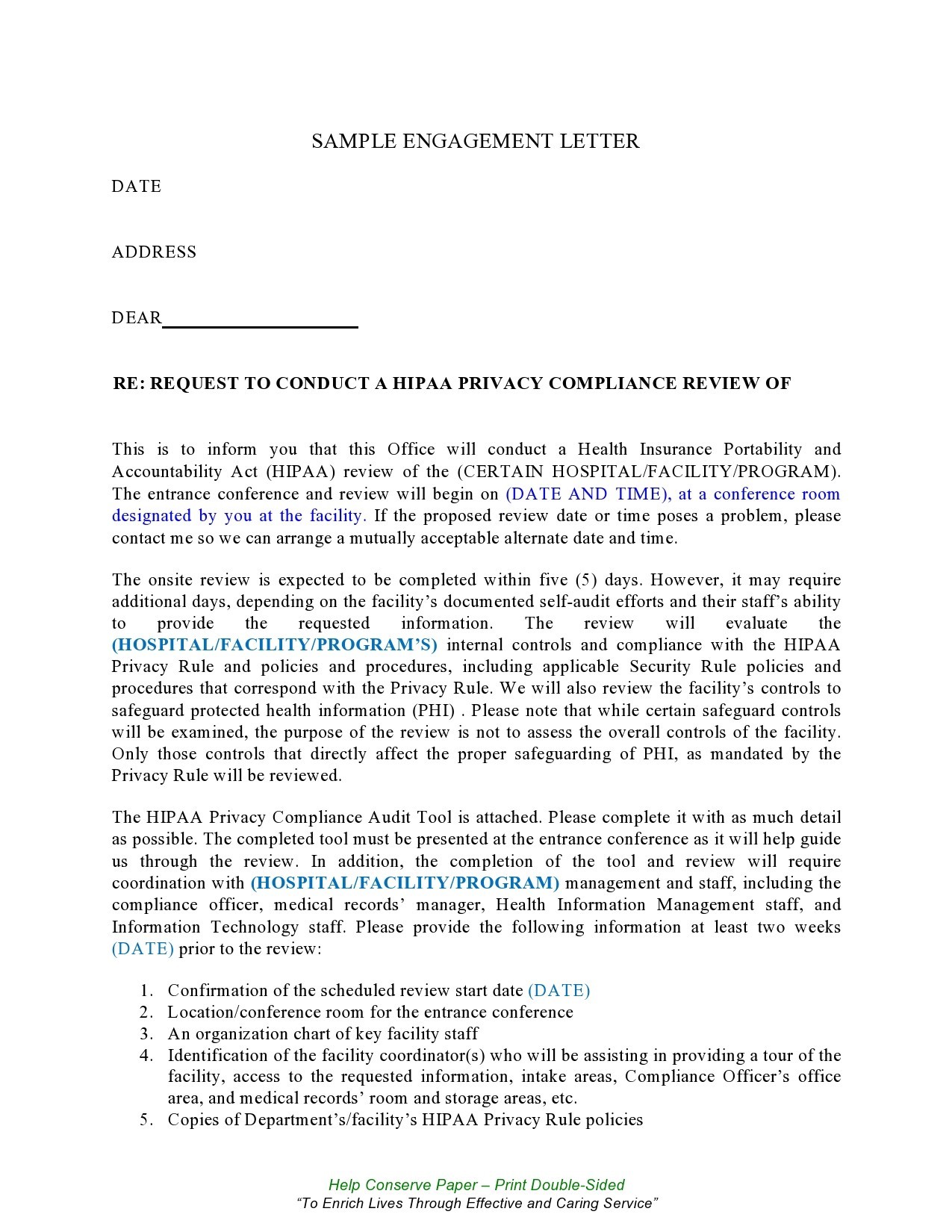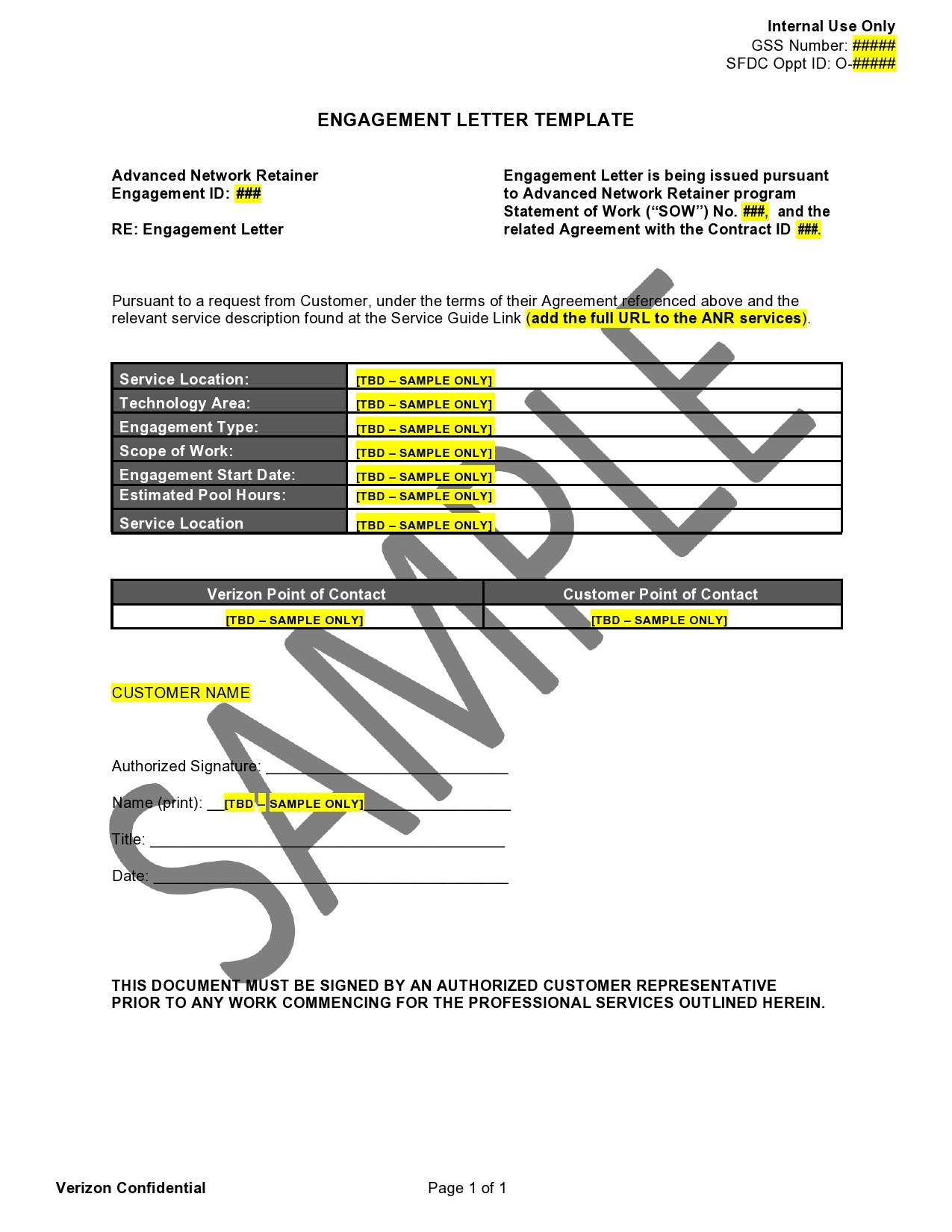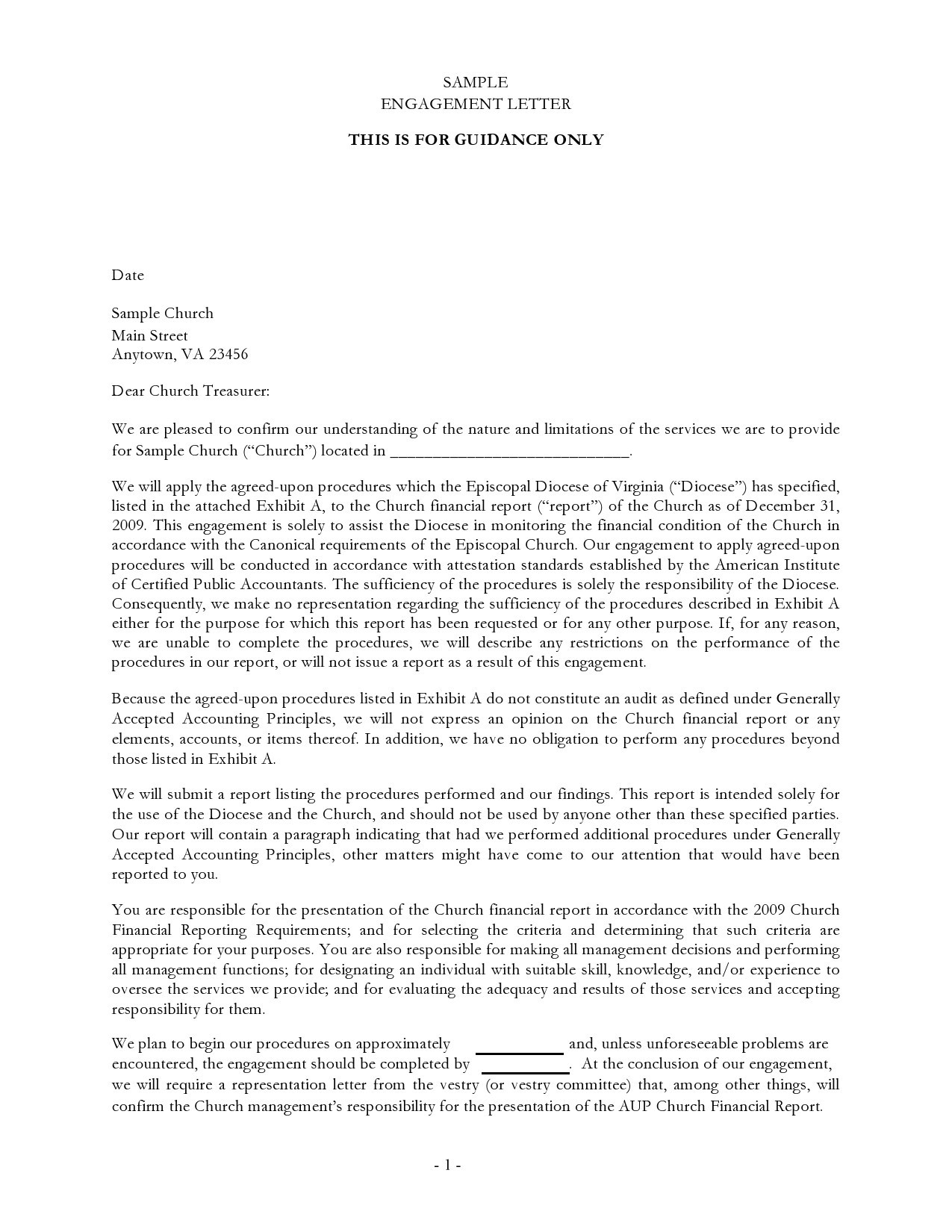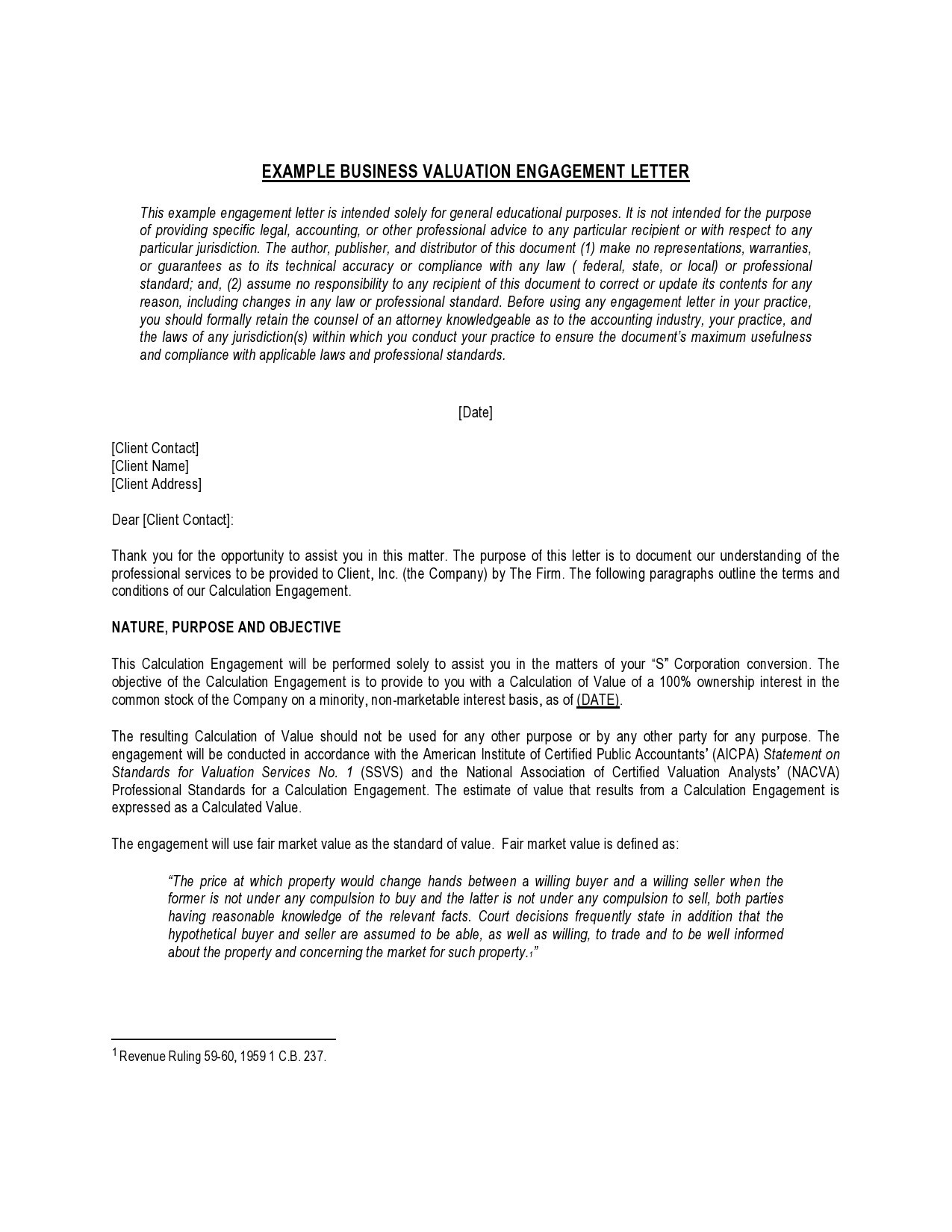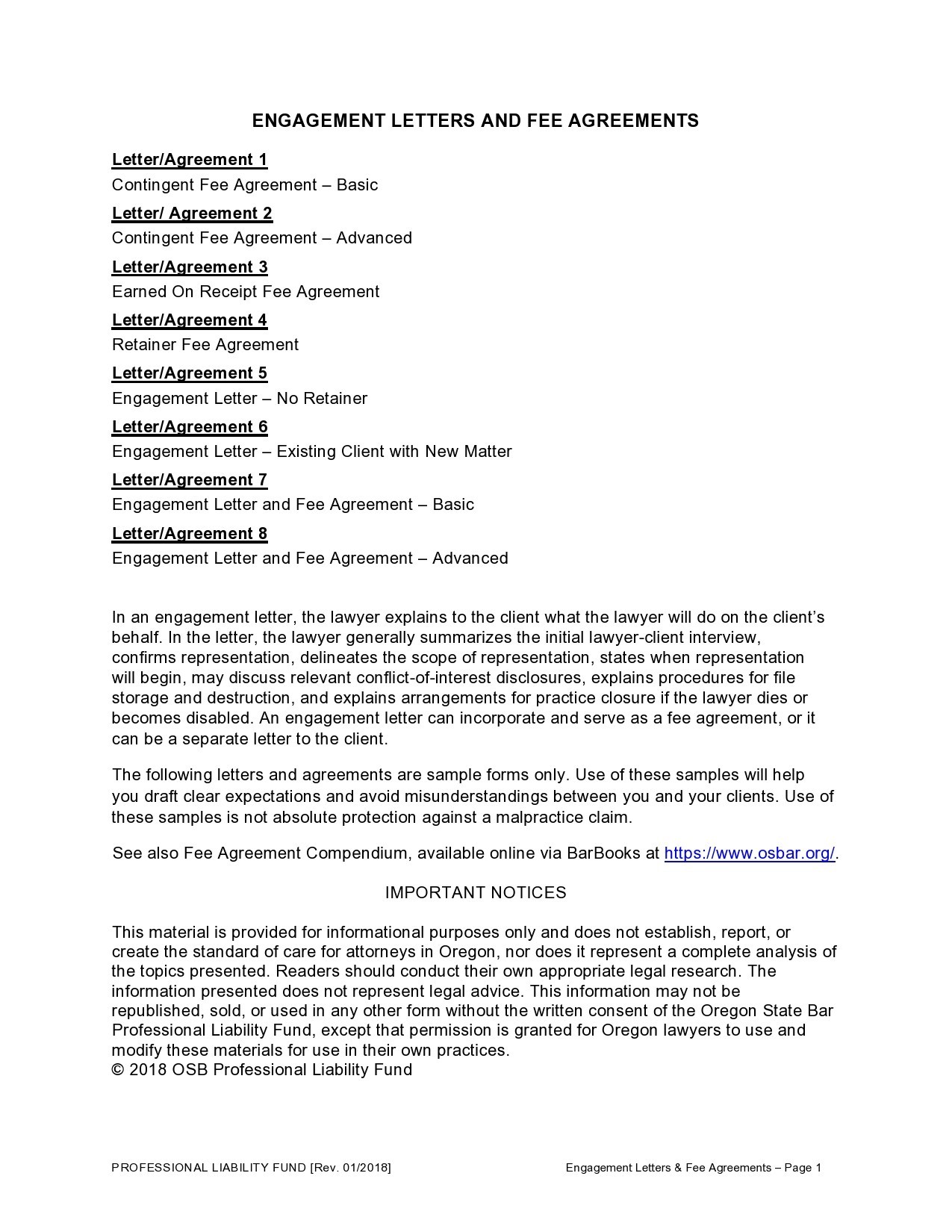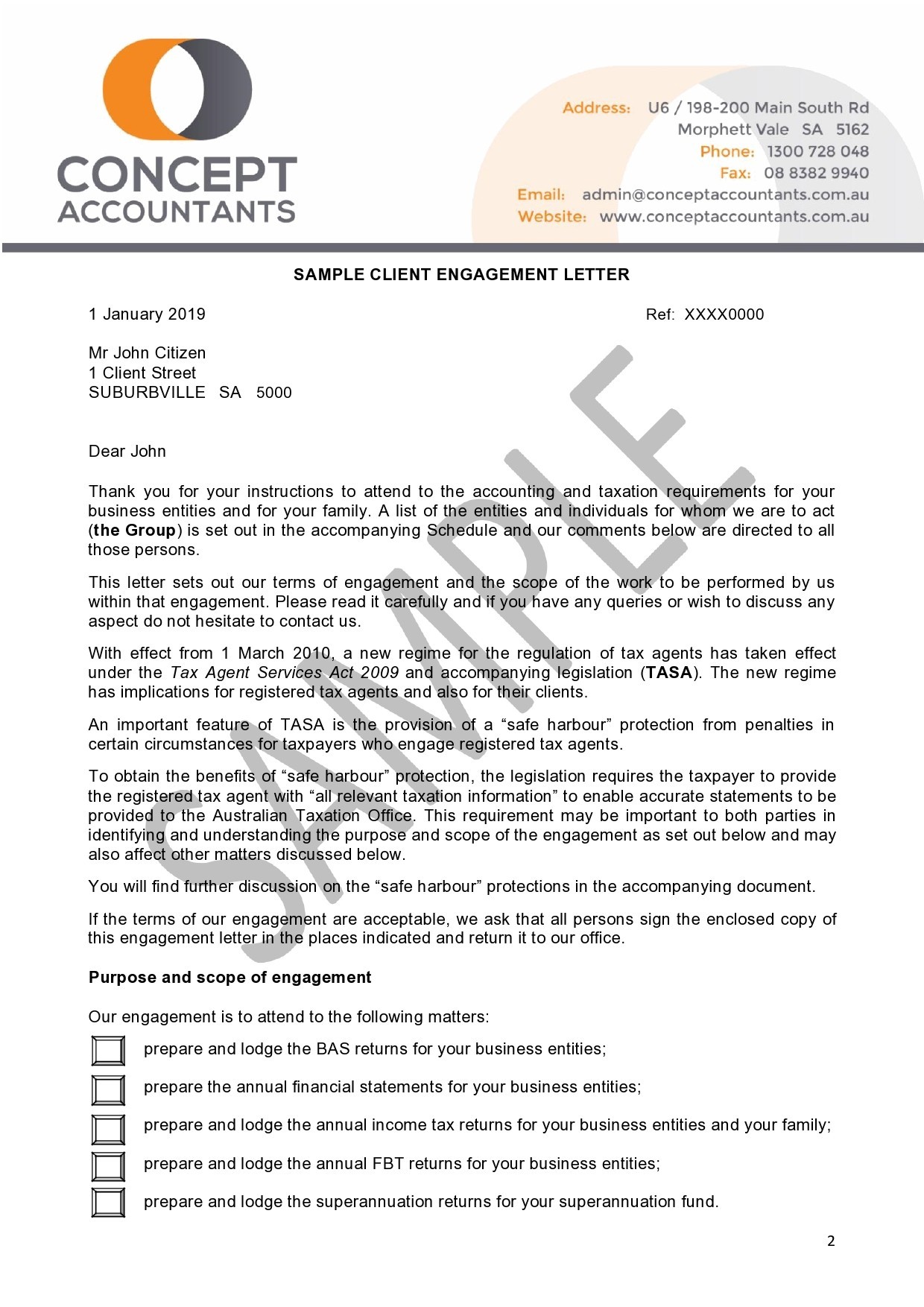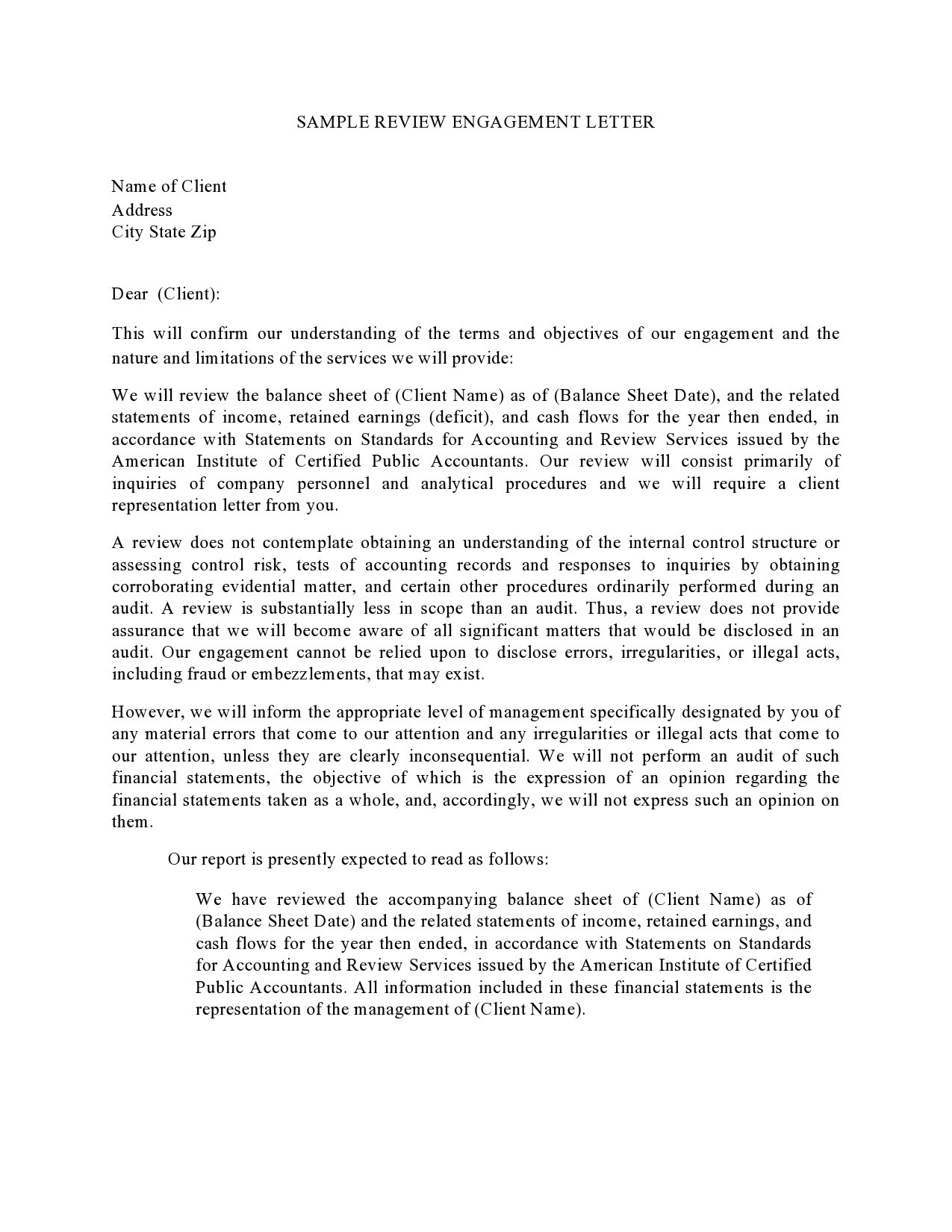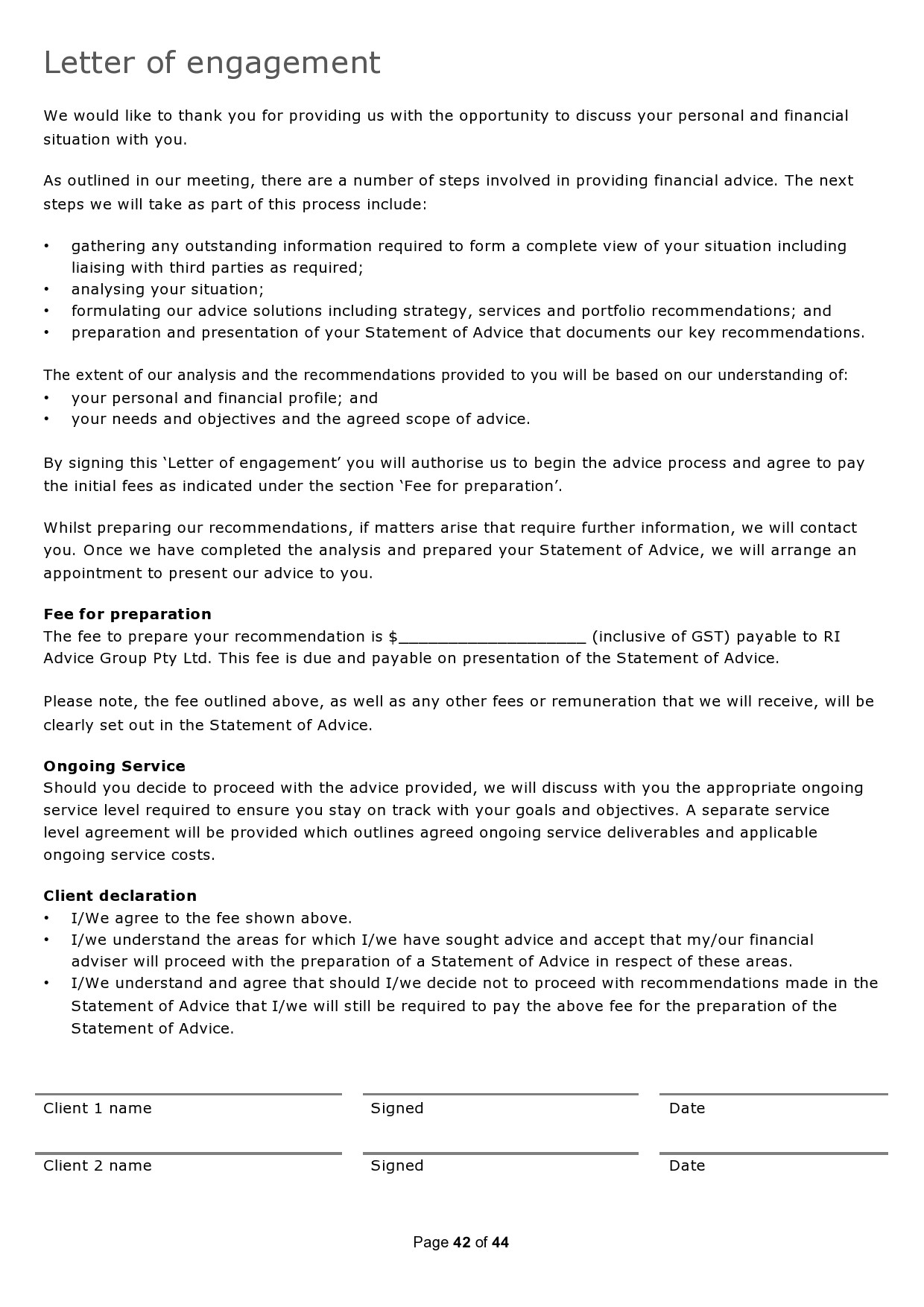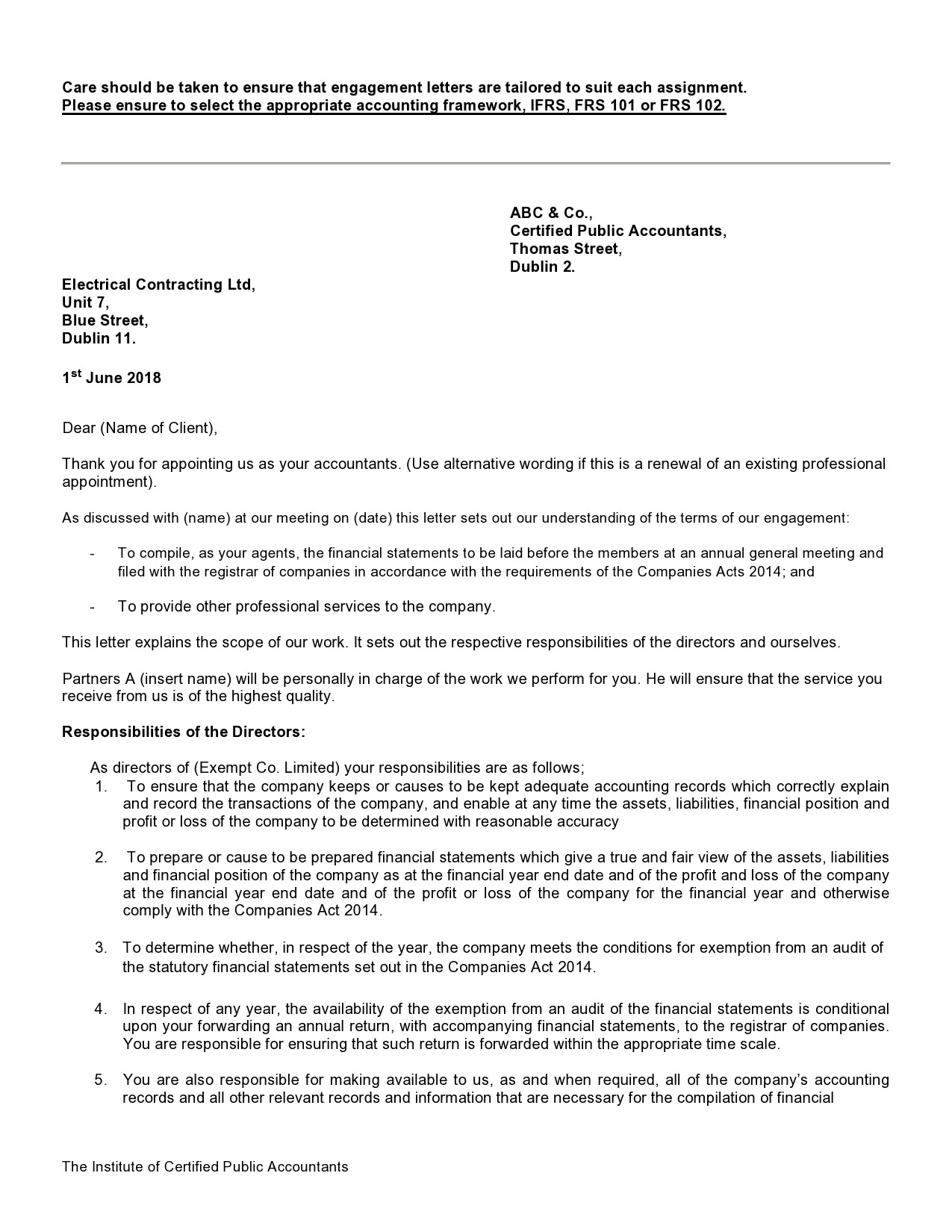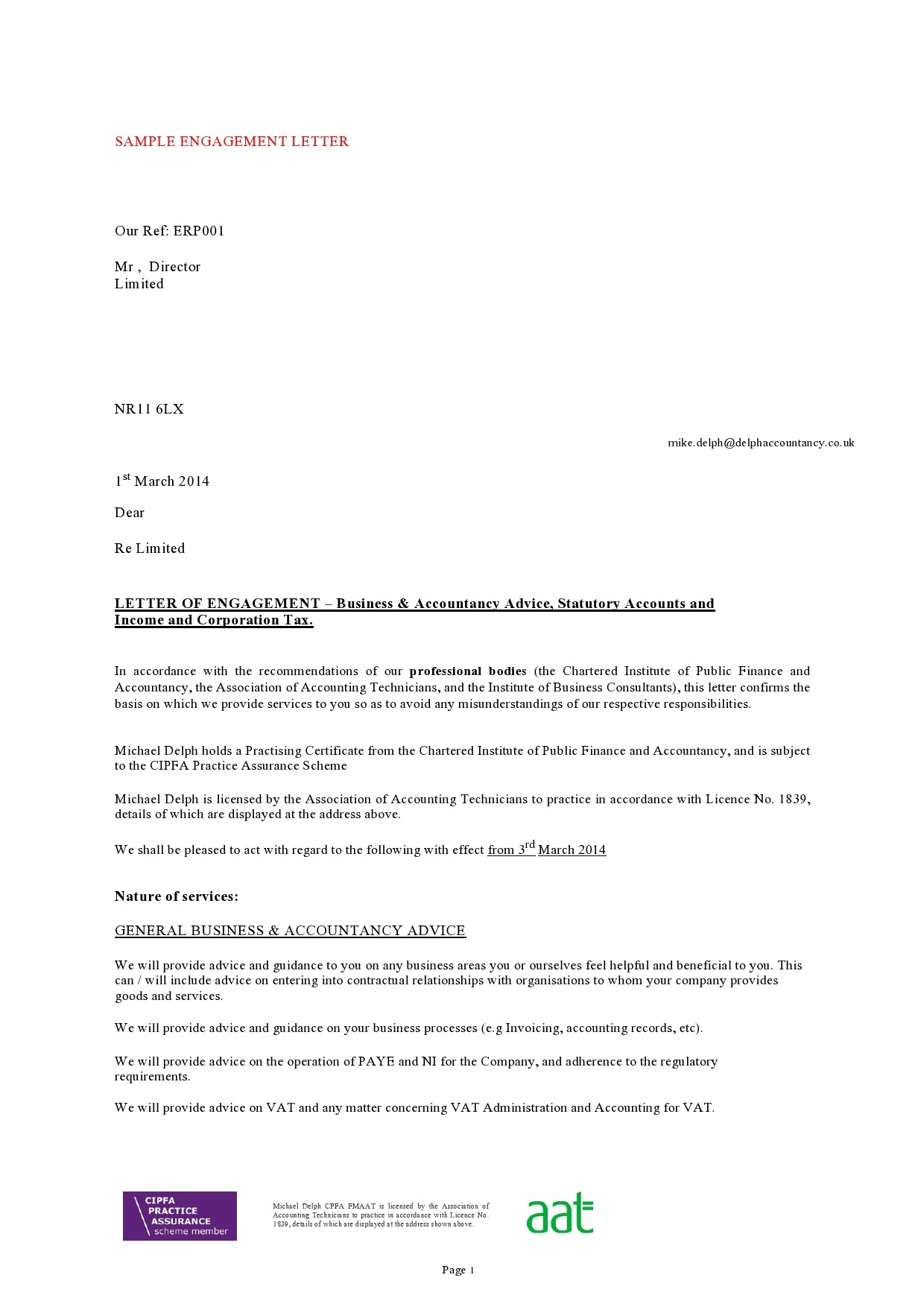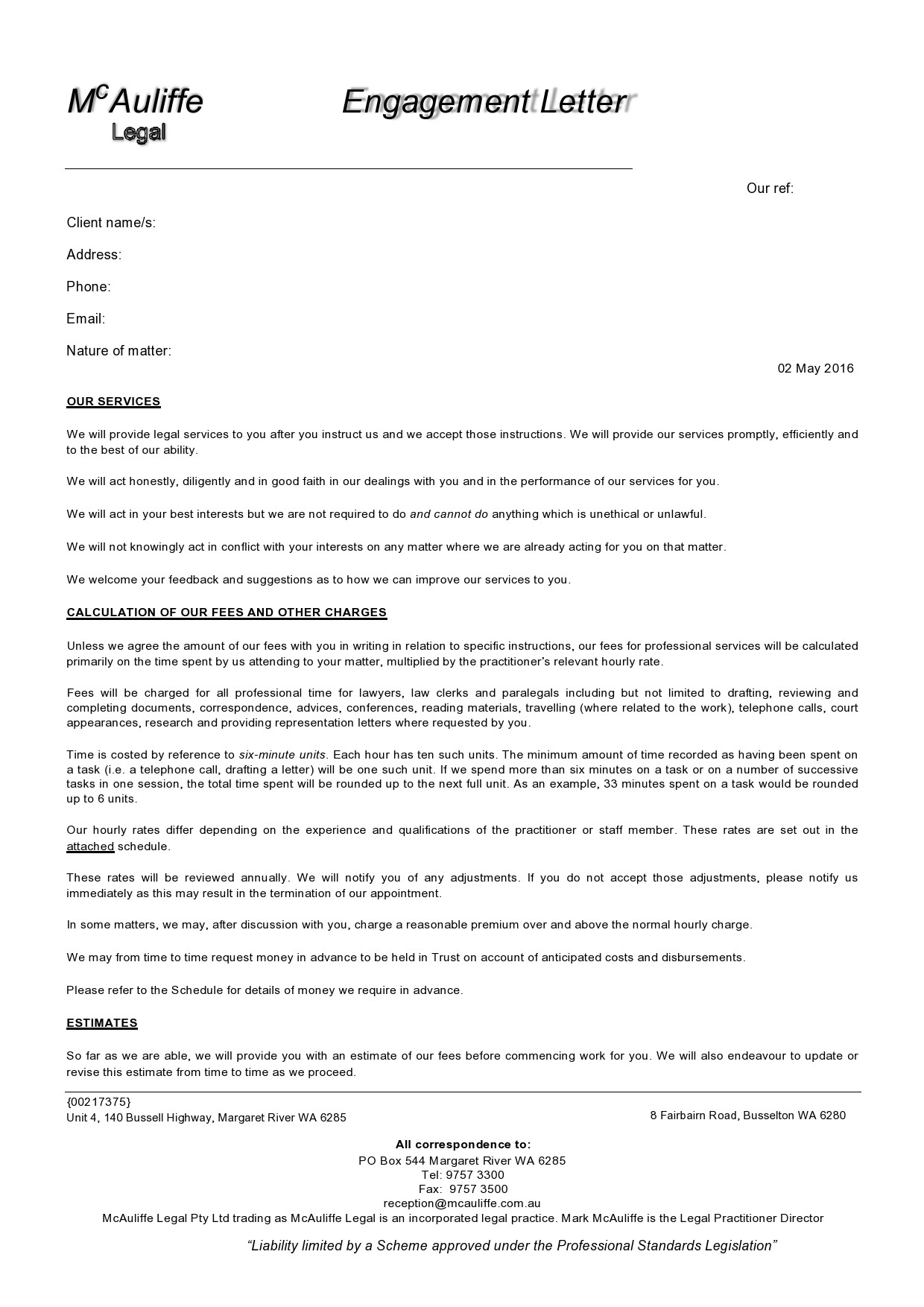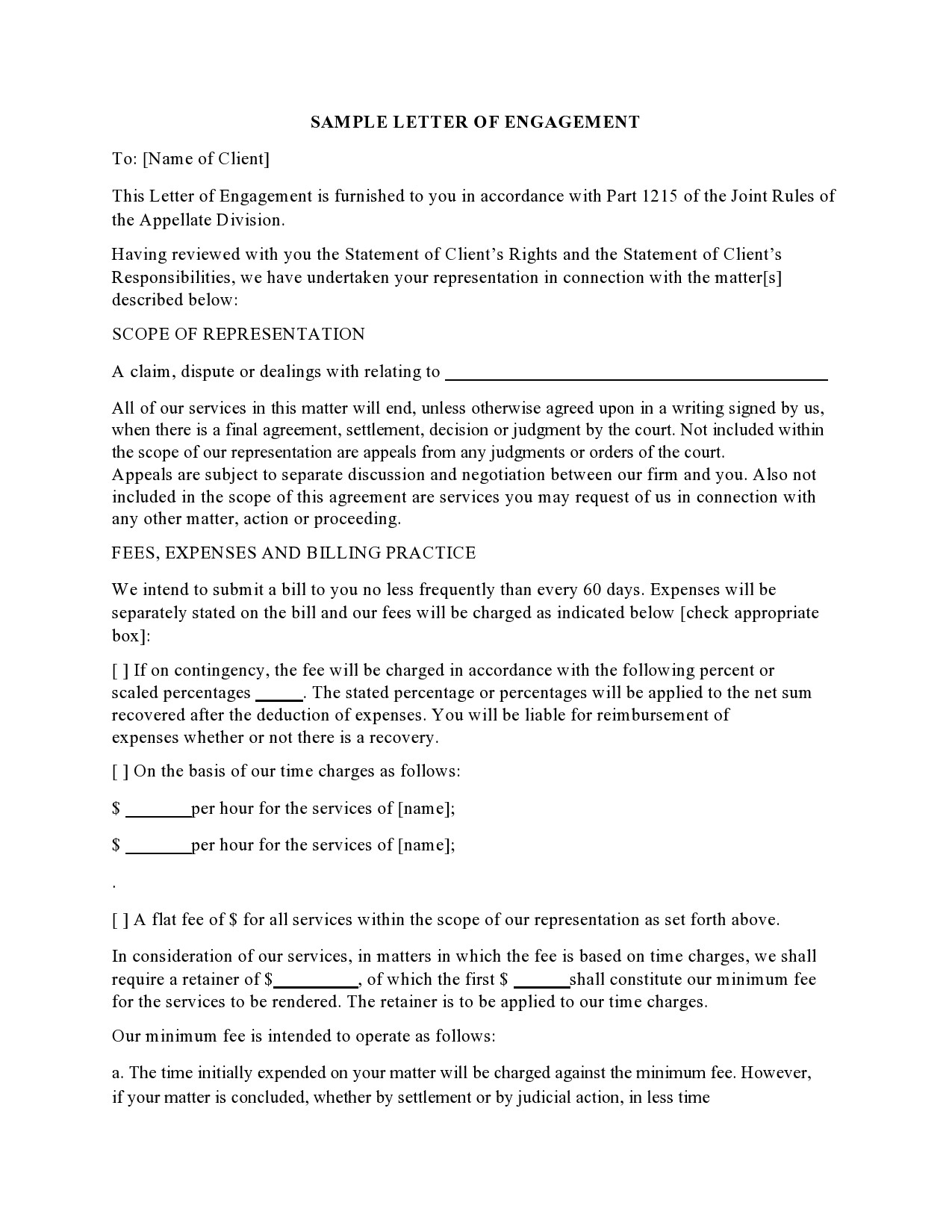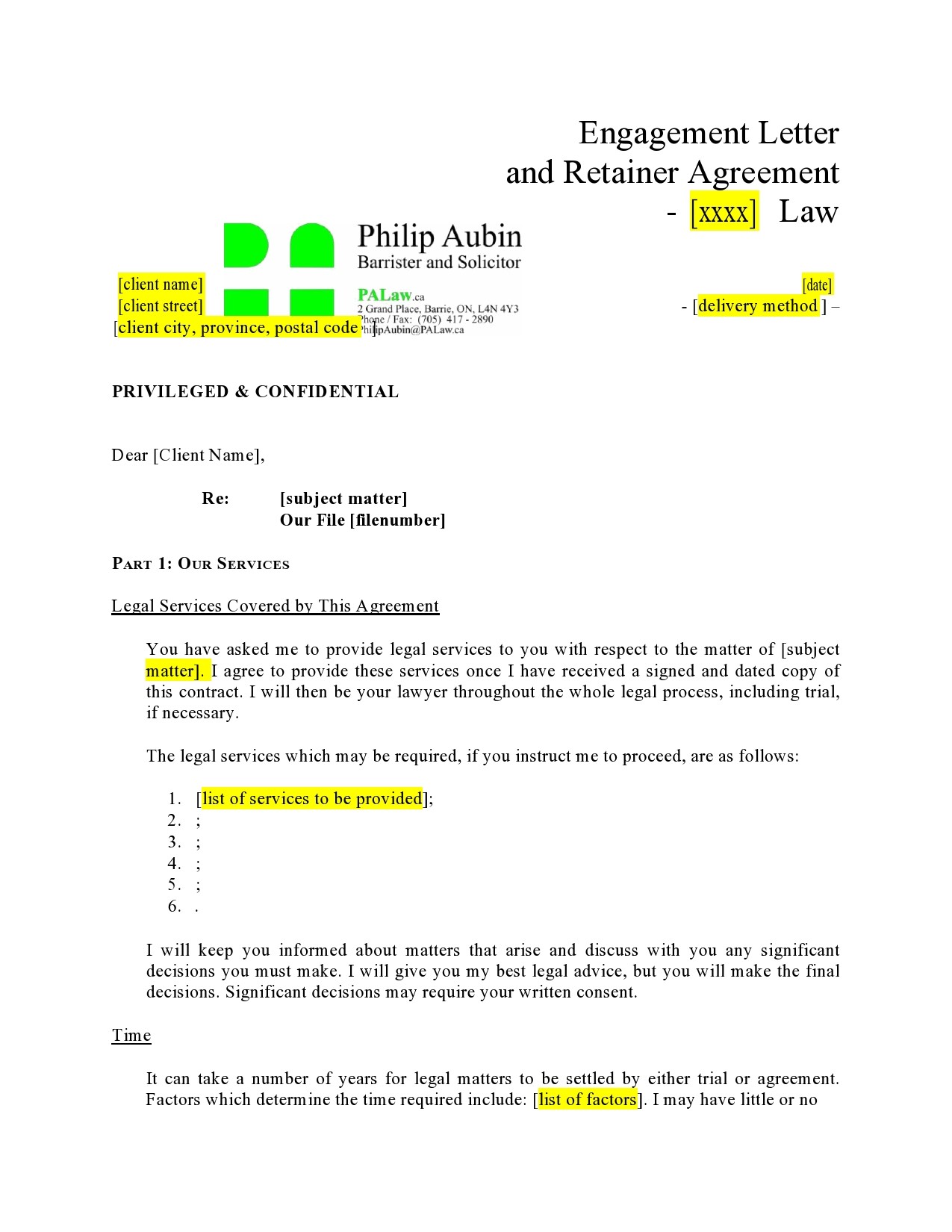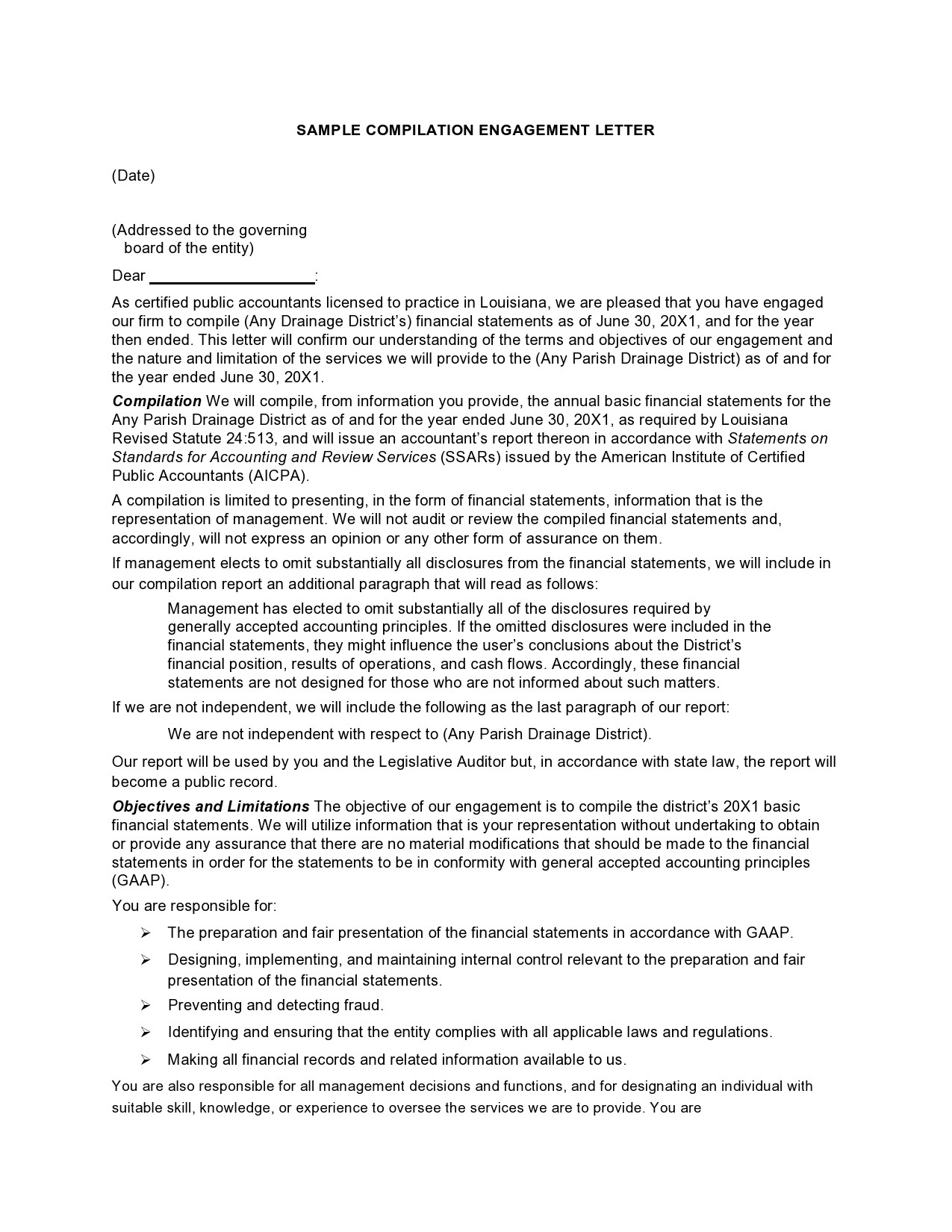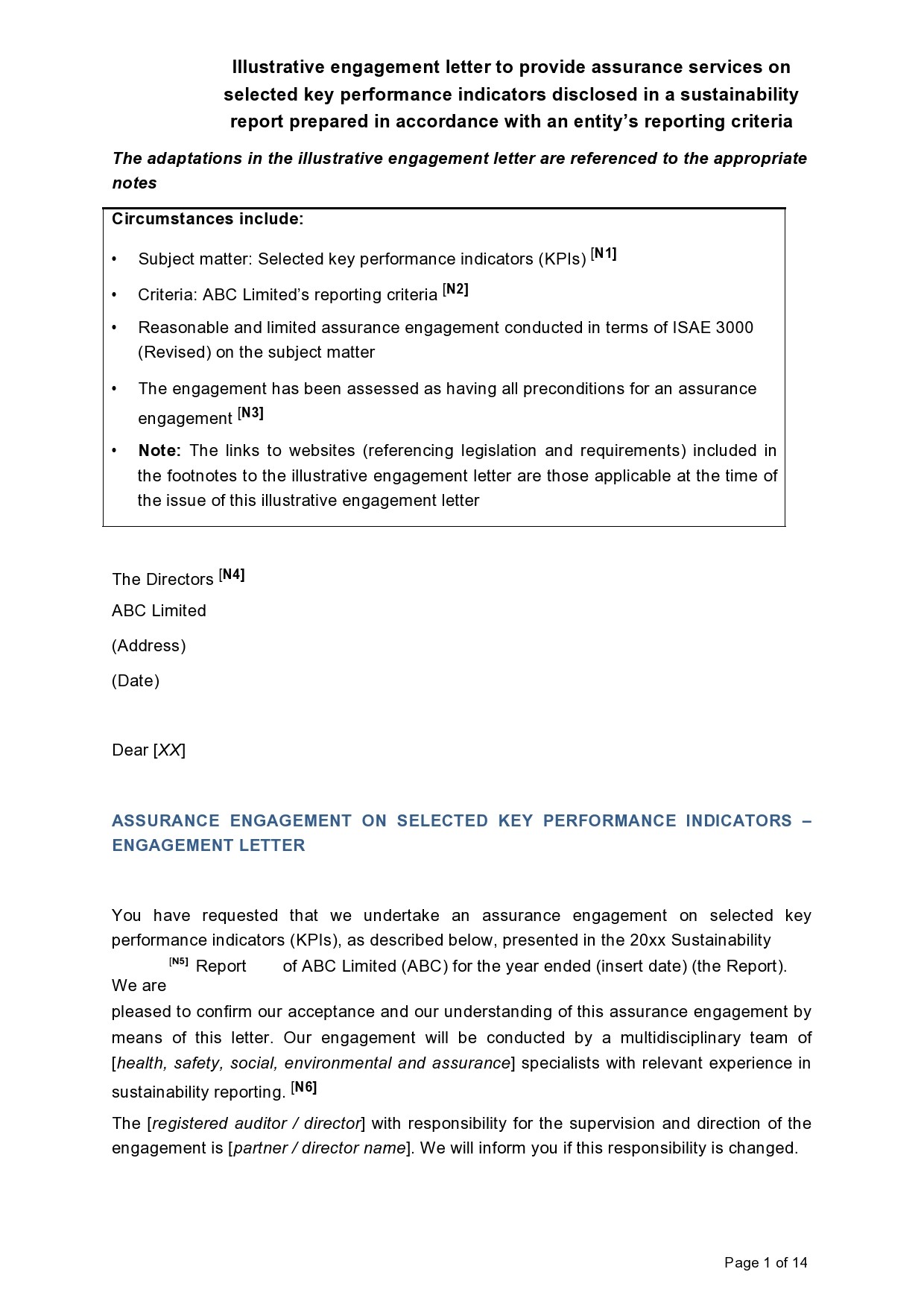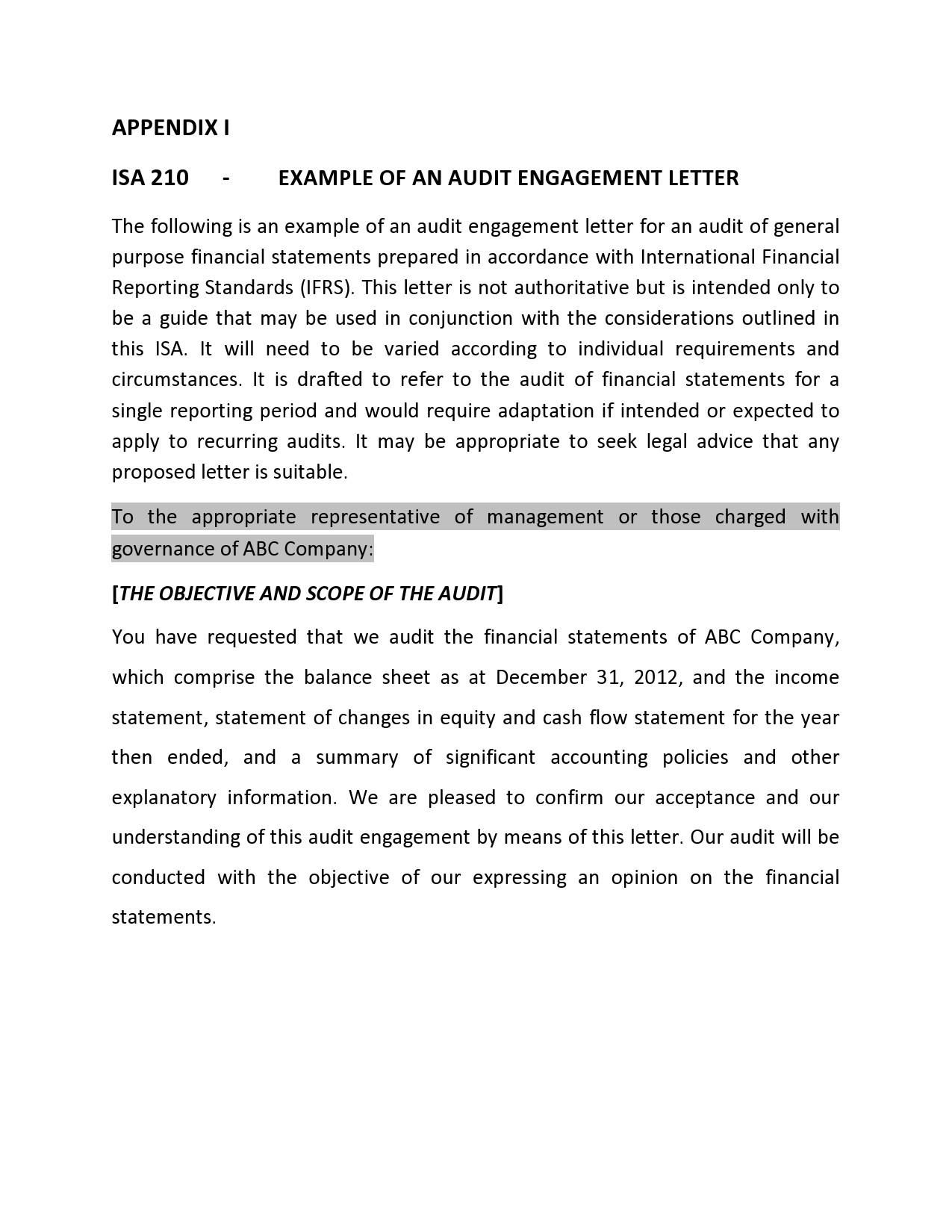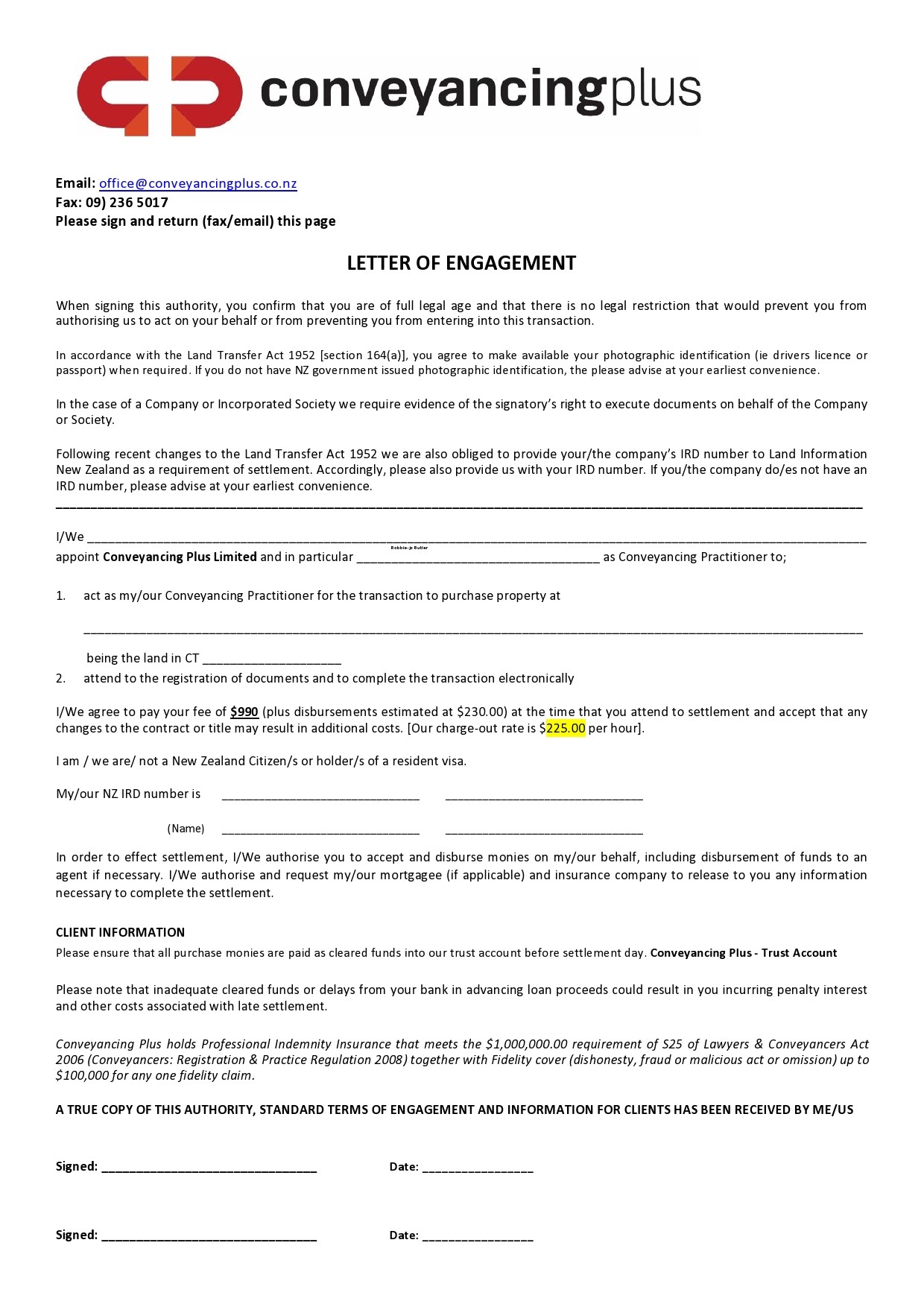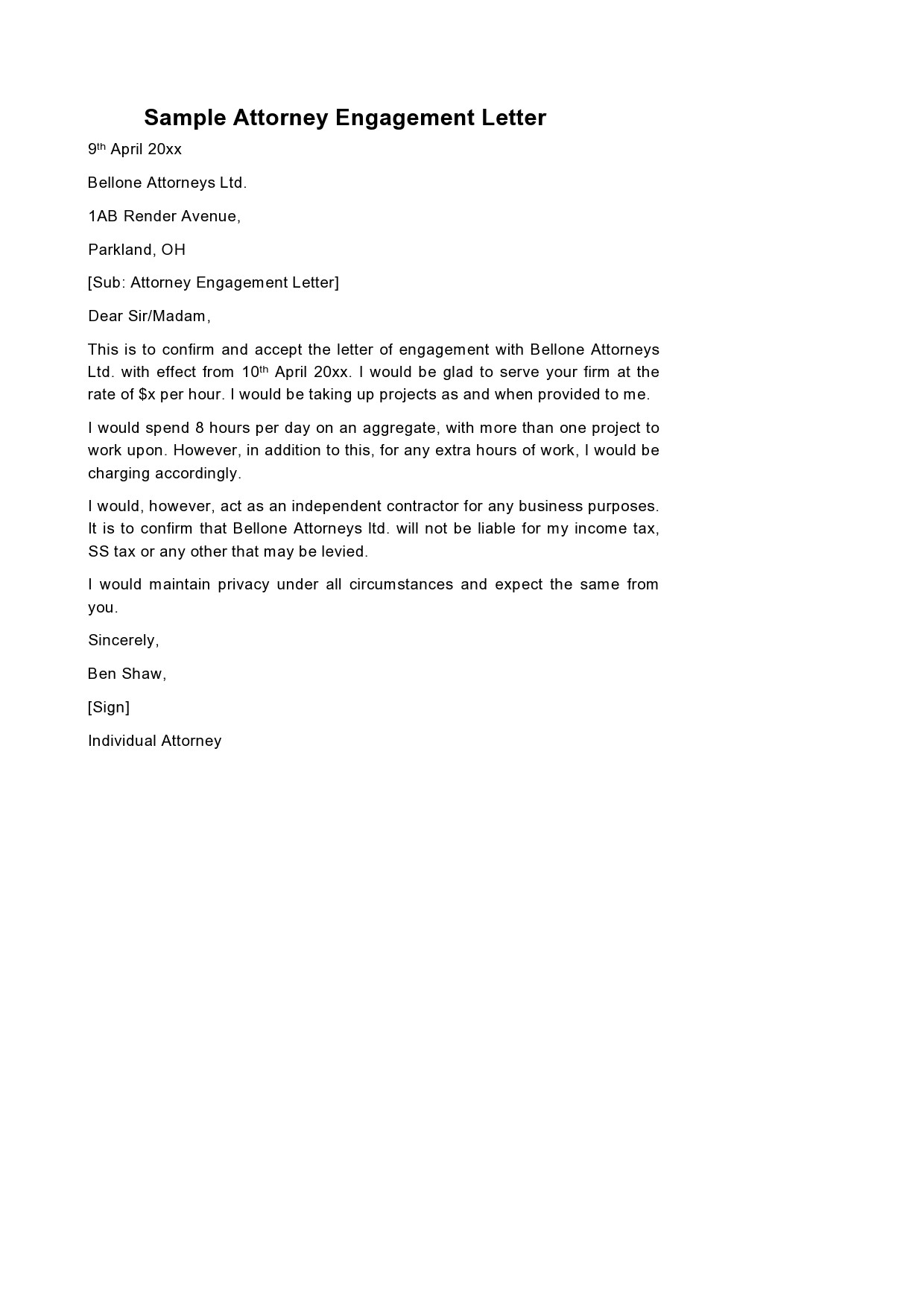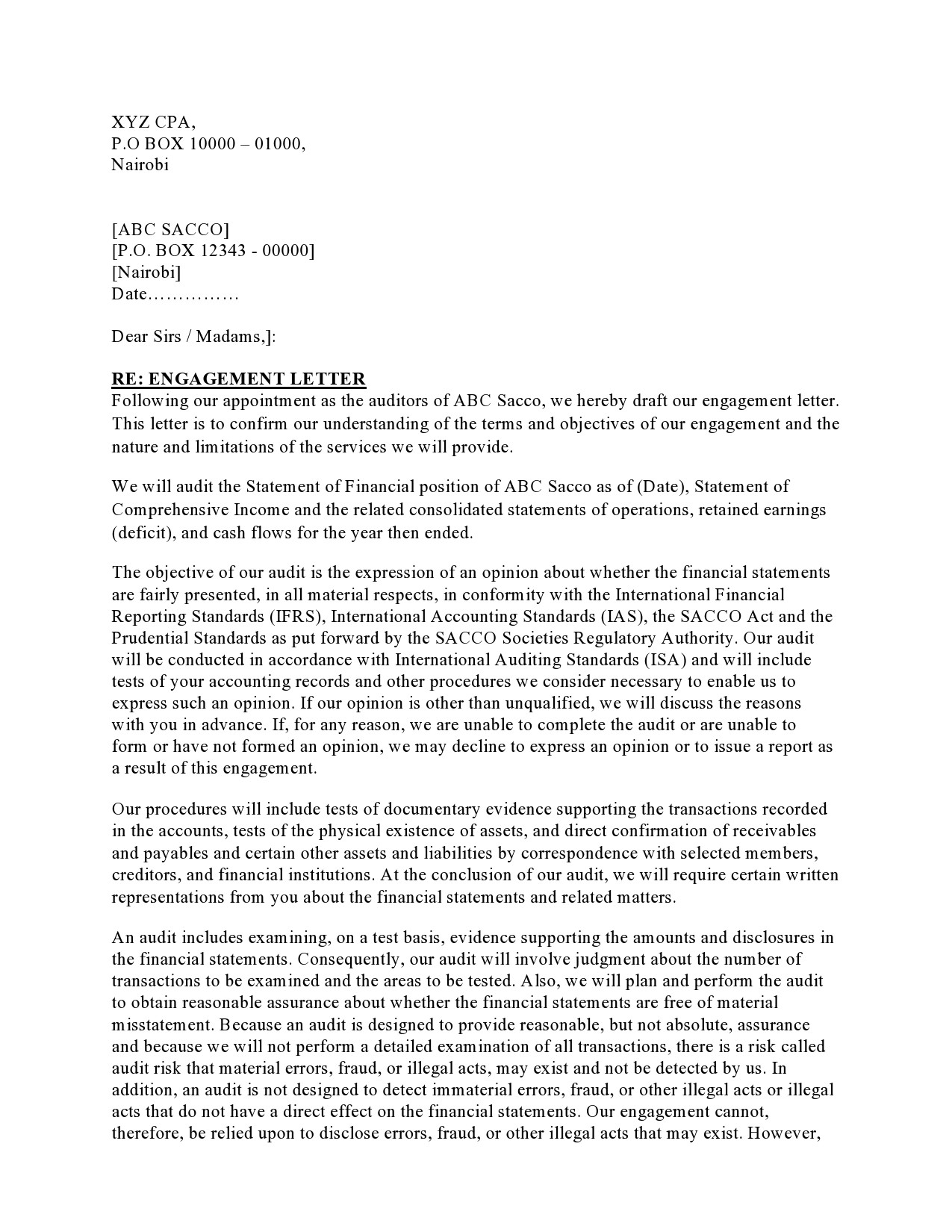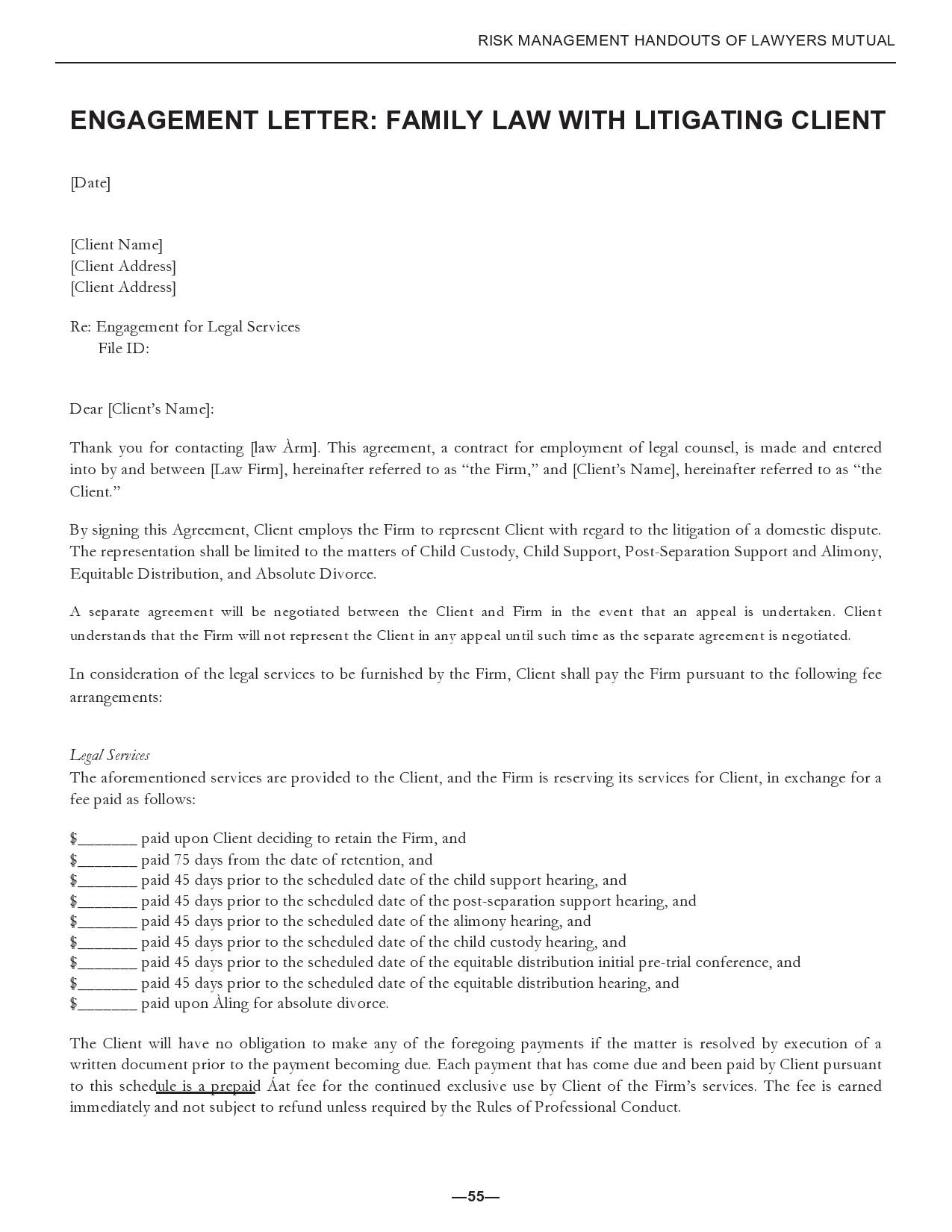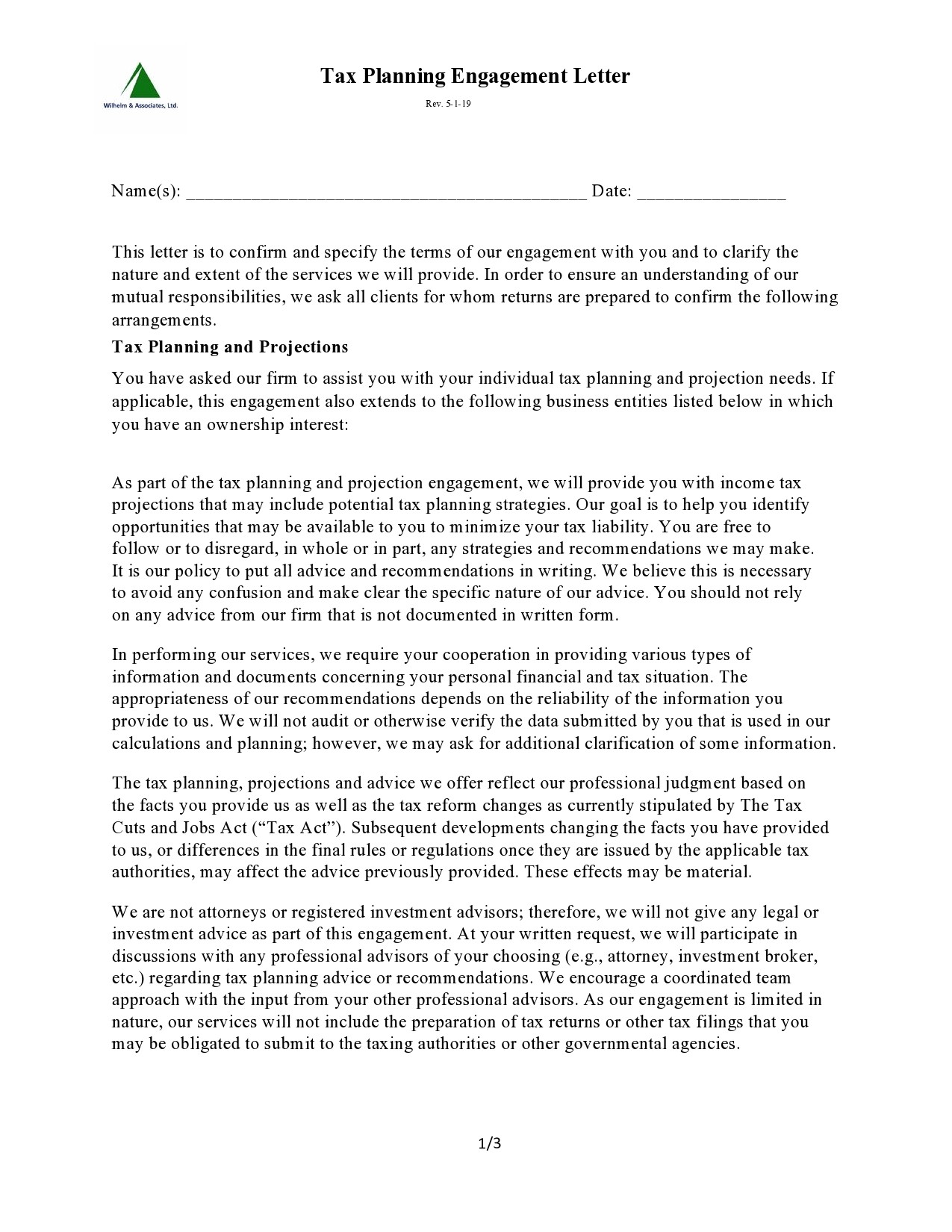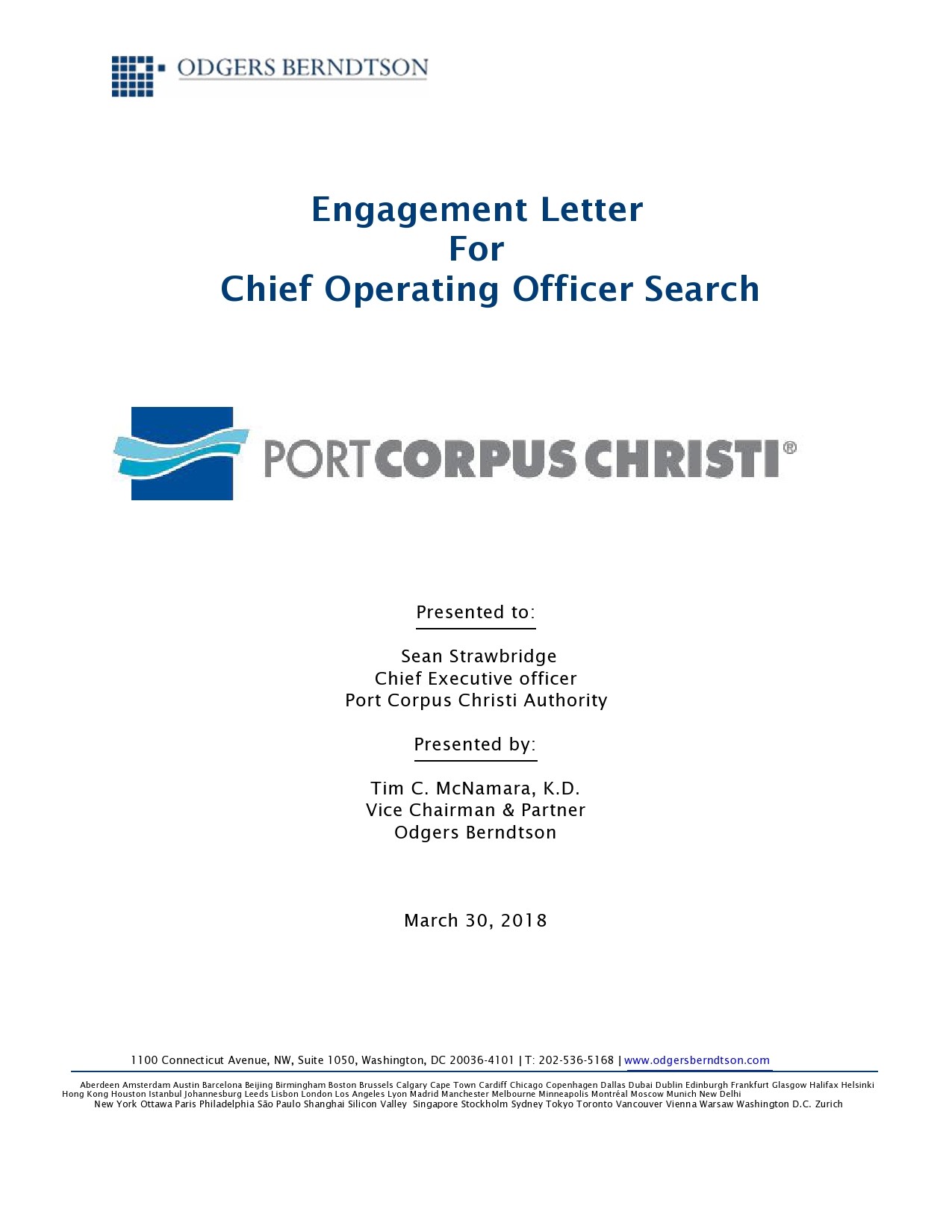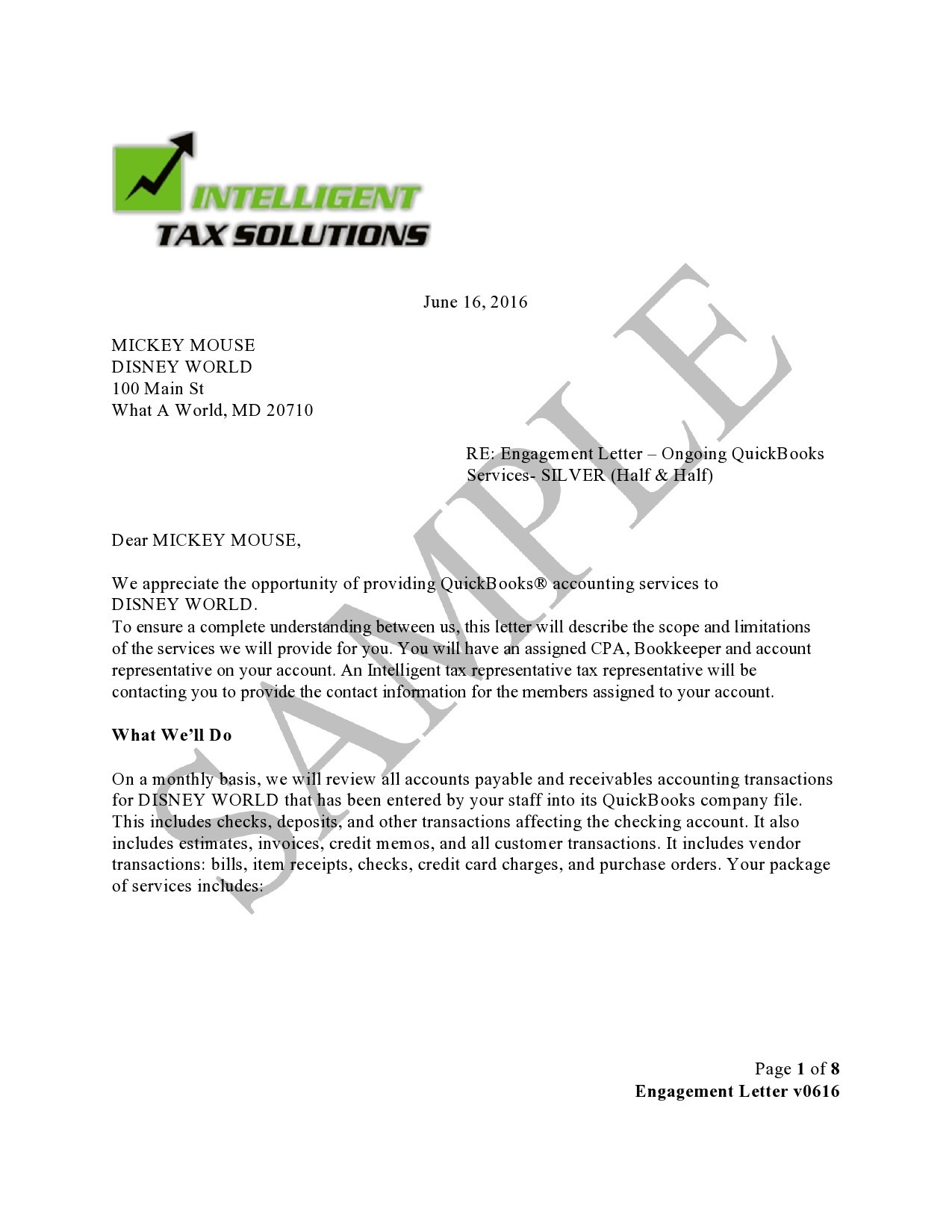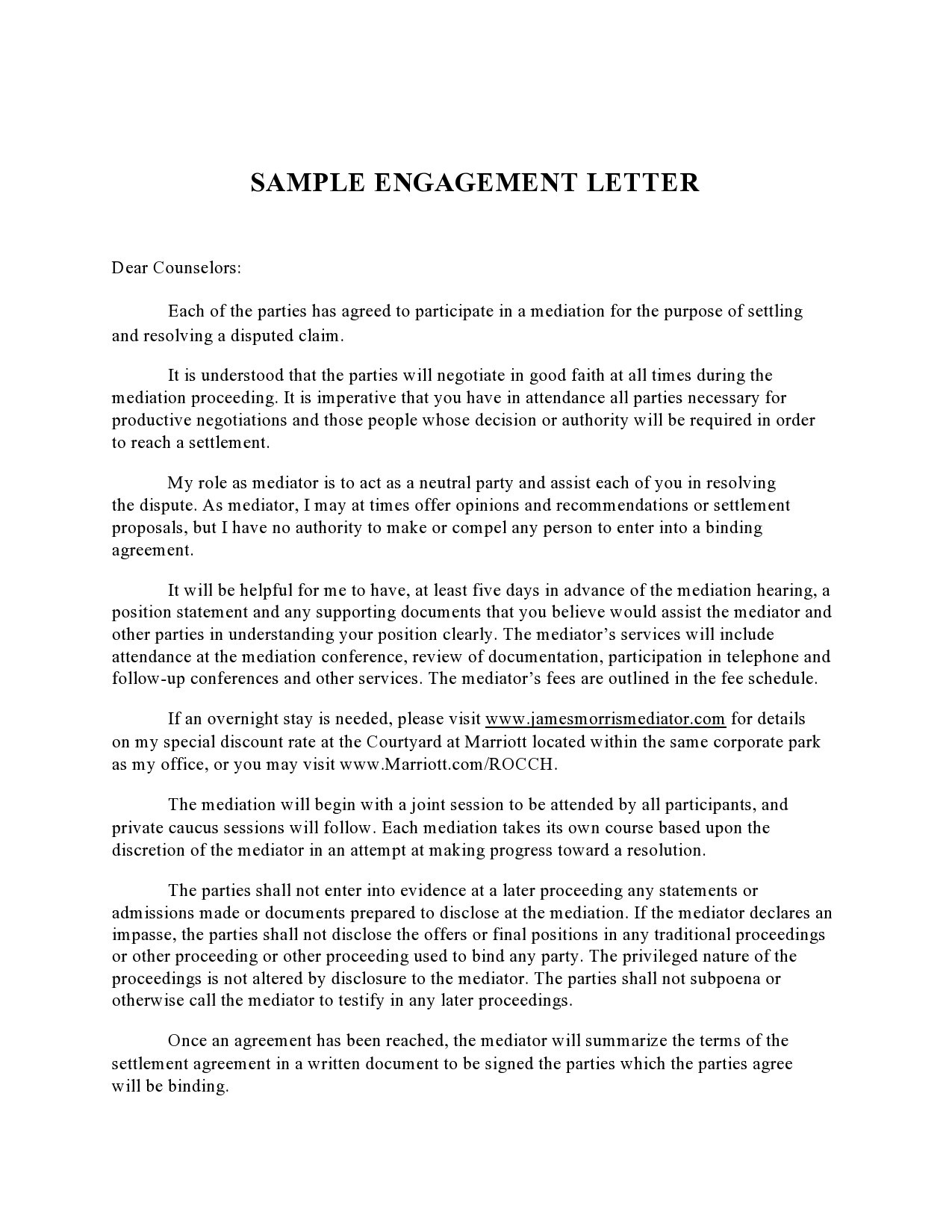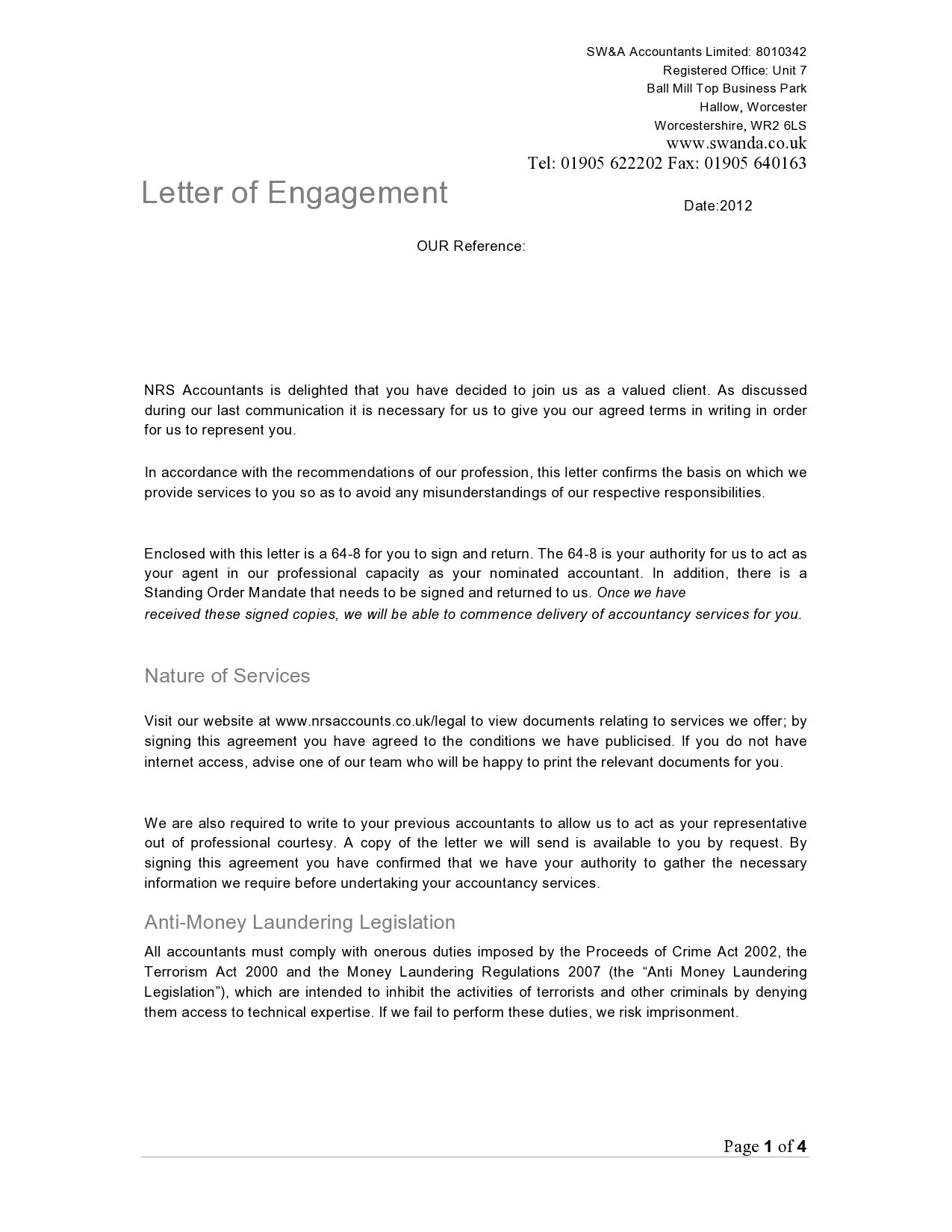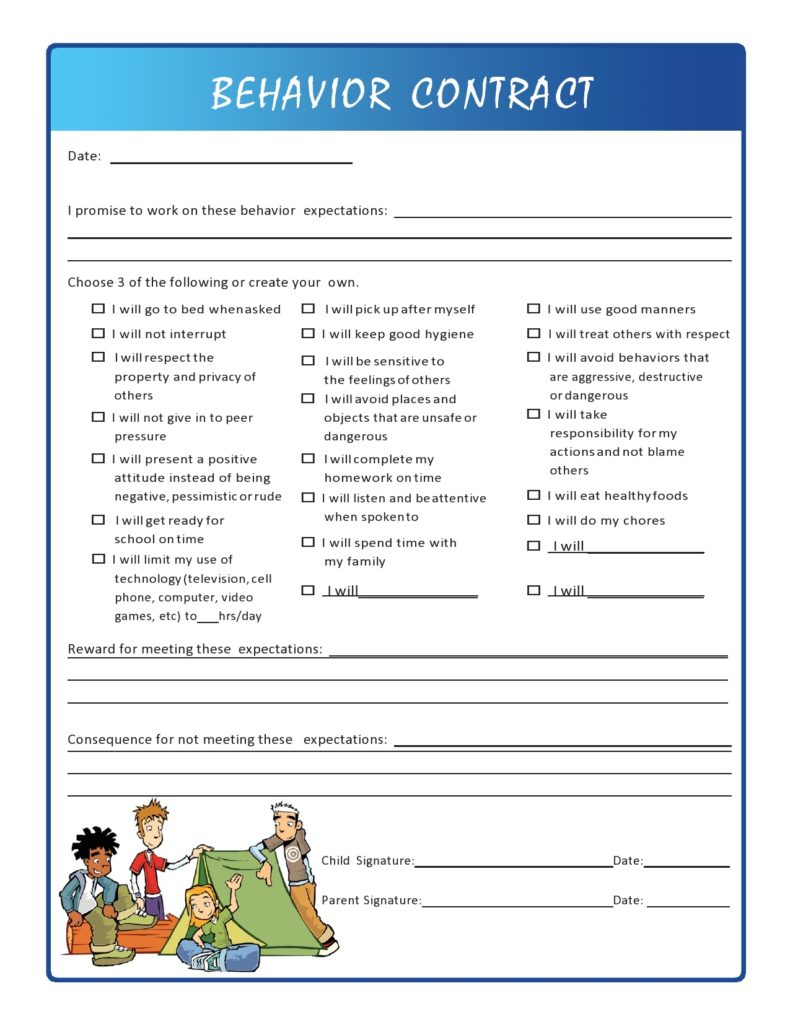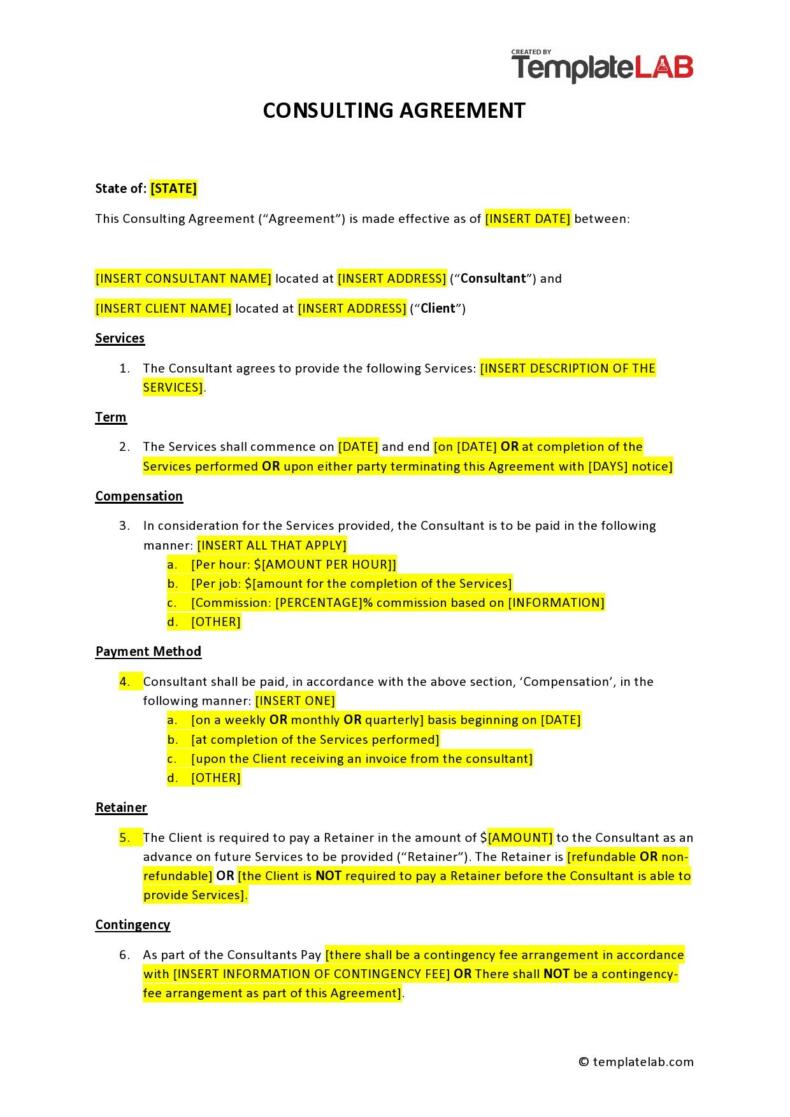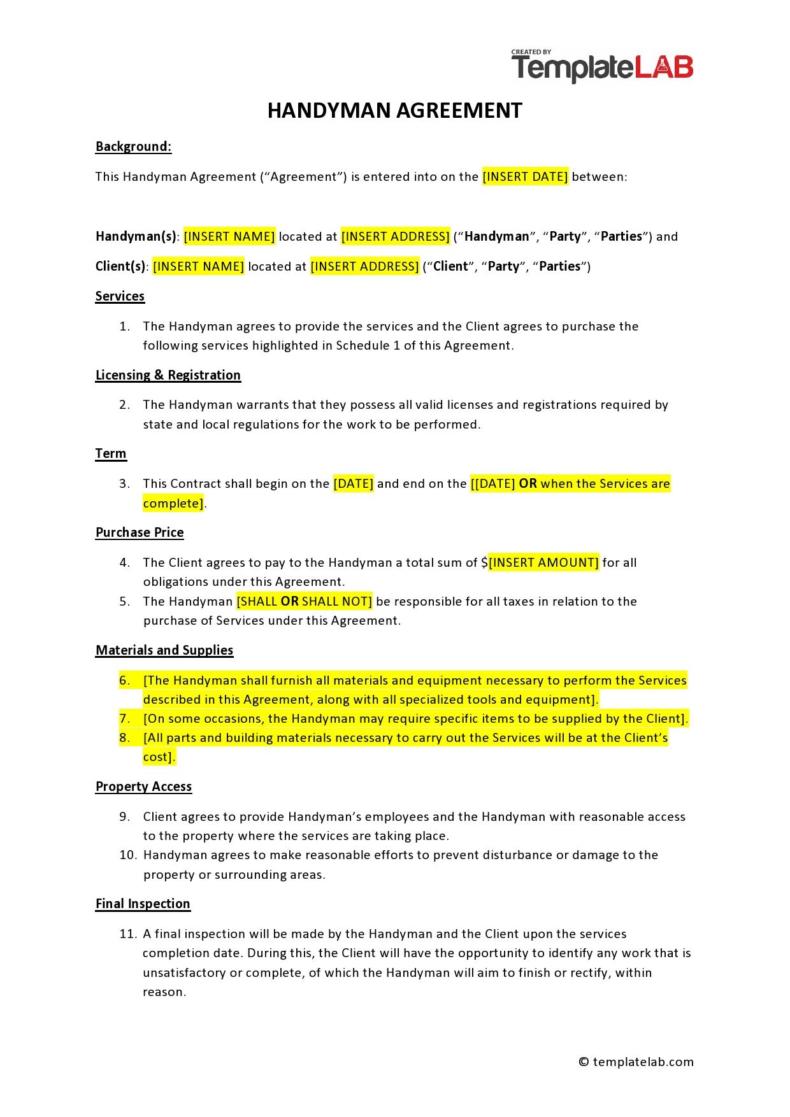An engagement letter is more common in the business world than anywhere else. This is a written contract that explains the business relationship between two parties, usually a business establishment and a client. The main purpose of letters of engagement is to set the expectations for both parties involved in the agreement. This is typically intended to describe what services to deliver (the scope of work), terms and conditions, compensation, and deadlines.
Table of Contents
- 1 Engagement Letter Samples
- 2 The importance of an engagement letter
- 3 Letter Of Engagement Templates
- 4 What to include in your engagement letter?
- 5 Consulting Engagement Letters
- 6 How to prepare an engagement letter?
- 7 Bookkeeping Engagement Letters (CPA)
- 8 How does an engagement letter work?
- 9 Lawyer Engagement Letters
Engagement Letter Samples
The importance of an engagement letter
Letters of engagement are the basis of many legal relationships in the world of business. Once the parties concerned have signed it, an engagement letter constitutes a legally binding agreement between two parties. For instance, you can begin a business relationship with the new client using a letter of engagement template. There are three important reasons why you need to have this communication:
- It binds the relationship or partnership legally
You can have a great start with your relationship when you have a legally binding contract in place as this lends security to both your client and yourself. The engagement letter can be your go-to guide in case there is a disagreement between yourself and the other party. - It sets the expectations
Tax resolutions clients going through a difficult experience will expect you to give them foresight on what they need to do. They may want to see more specific language pricing, the scope of the services you offer, and how changes in the agreement may occur to better their predicament. Knowing what to expect from the very start can boost the client’s confidence which you both need to move forward.
For tax experts, you need an engagement letter sample to specify expectations. These can include the importance of open communication, the need for your clients to be very honest with their taxes, and straightforward about all their financial issues while you’re in agreement. - It prevents miscommunication
Your relationship with your clients starts with a verbal agreement. You might not even know that this is already an agreement, but after several consultations, you may open things that the client may understand as agreements or promises.
But the introduction of a letter of engagement template takes much of the guesswork out of your business relationship. After coming to an agreement, you set everything on paper. Then you both affix your signatures.
There is no need to try to remember the exact amount you quoted to your clients in the consultations. The fee will be in the letter and the client won’t feel surprised anymore when you charge them an extra fee for representing them in an appeal or for providing additional services.
Letter Of Engagement Templates
What to include in your engagement letter?
The best and most effective letters of engagement make use of a stand-alone “terms-and-conditions” document that they incorporate. This makes the letter shorter, thus, more appealing to clients. Following are the elements to include in your letter of engagement template:
- Identification
Properly identify the individual, group, entity or part of an entity who will receive your services. - Scope of your services
This is perhaps the most important section of any engagement letter sample. This includes the scope of services that you will help mitigate and serves as a guard against clients who would develop unreasonable expectations regarding the services you offer. Be very clear and specific about the services you include. - Engagement period
Specify the dates on when the engagement begins and ends. If applicable, you may also include the expected delivery dates if there is an expected deliverable involved. - Fee structure
Make a detailed presentation of how often and how much you plan to bill your client. Don’t forget to include any extra services that the client requested which aren’t part of the letter. There should also be a clause in the letter that specifies what would happen in case of delayed payment. This could either be a suspension of services or a late fee. - Responsibilities
In most engagement letters, the client has the responsibility to perform certain actions and provide certain records or information. In detailing the responsibilities of the client, be very specific and demand the information you’re relying on so you can accomplish the service. - Professional standards
Refer to the professional standards that govern the engagement as these may vary from one place or area to another. - Confirmation of terms
The last part of your letter of engagement template should include the confirmation of terms. This signifies that your client understands the contents of your business agreement.
Consulting Engagement Letters
How to prepare an engagement letter?
Usually, an auditor would first create an engagement letter to strengthen audit arrangements between the client and the audit firm. The letter itself can serve as a contract and would detail the duties and responsibilities of both parties.
It isn’t really a necessity to have a written contract with an audit client but it’s considered unwise to conduct an audit when you only have a verbal agreement. To whom you will addressing the letter depends on the business entity. Here are some guidelines for you:
- If you’re working with a company, the right addressee to the letter will be the board of directors.
- If the client is only a small company that doesn’t have its own board of directors, you can address your letter to the chief executive officer.
- If you’re auditing a sole proprietorship, address your letter directly to the owner.
- For partnerships, address the letter to the partners.
After determining who to address your letter to, it’s time to start writing. Here are a few steps to guide you:
- Think about the objectives of your letter
For instance, for a financial statement audit, your objective is to give your opinion regarding the financial statement. - State the responsibilities of management
These may vary depending on the terms and conditions of the agreement. For instance, the management has the responsibility to provide financial statements along with the proper application of generally accepted accounting principles. - Your responsibilities
These also can vary. For instance, for an audit of financial statements, one of the responsibilities is for you to conduct the audit in accordance with the generally accepted auditing standards. - Any limitations of your engagement
You should remember that the purpose of an audit is to provide assurance that the financial statements don’t contain any material misstatements. But because you won’t examine the transactions directly, there is always a risk that illegal acts, material errors or fraud can exist. - State hiring restrictions
One general condition of an engagement letter sample is that your client won’t try to hire anyone who works on the audit team. Usually, there is a required 1-year “cooling-off period” that exists when you work on a client audit. This means that you shouldn’t accept a position in the company until that time passes. - Other items to include
Your fees and the dates you expect to get paid.
Any plans of hiring specialists in the company’s field to help you out.
The conditions under which you can terminate the engagement.
Bookkeeping Engagement Letters (CPA)
How does an engagement letter work?
An engagement letter establishes the business relationship between two parties. It sets limits on the obligations of a company, either by inference or directly. Many businesses including auditors, lawyers, consultants, and accountants routinely use letters of engagement, whether their clients are large corporations or individuals.
This letter can also serve to define the scope of services. For instance, when a business or an individual hires the services of a lawyer, the letter can explain the specific purpose in doing so or the field of expertise to apply the services. A contractor can hire a lawyer to create a land purchase document but cannot ask the same for legal advice about other issues. The letter won’t state that fact as badly but it will convey a clear meaning.
With the letter in place, the client receives reassurance of knowing when the service will get accomplished and how much it costs. Moreover, the letter also clarifies that other costs not included in the agreement must come from the client. With this letter, you can set the boundaries that you expect. This has a number of benefits including:
- It prevents any “scope creep,” something that all lawyers and tax accountants dread.
- It cites services that aren’t included in the agreement but might get added in the future. This should come with a cost estimate for the additions.
- It may also include a clause about binding arbitration or mediation for the business relationship. This can provide guidance for dealing with disputes that arise between the parties.
In cases when the relationship between you and the business is going to be long-term:
- Most companies require engagement letters to get updated and signed by the client on a regular basis. This is a good idea if you plan to extend your business relationship.
- This allows for changes in the business relationship as time goes by.
- It also strengthens the document’s legal standing.
- It reminds the client of the scope which could, again, prevent “scope creep.”


